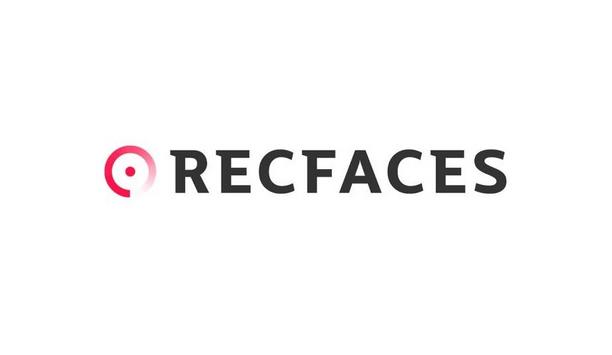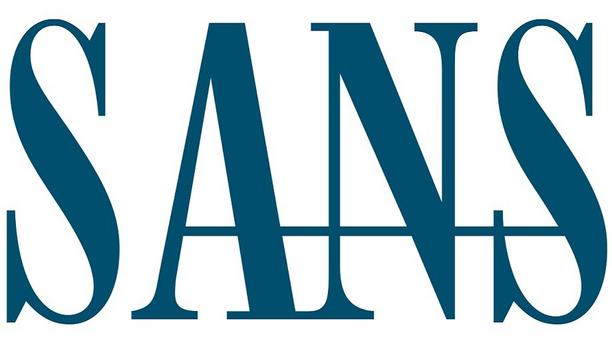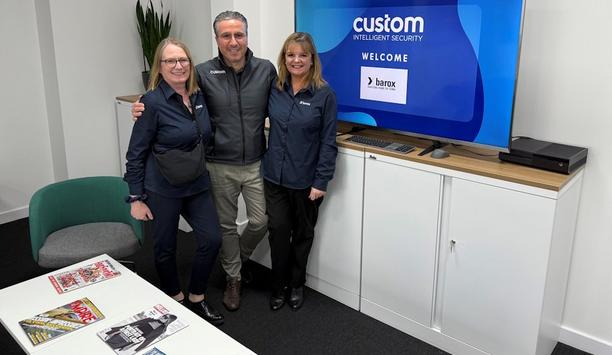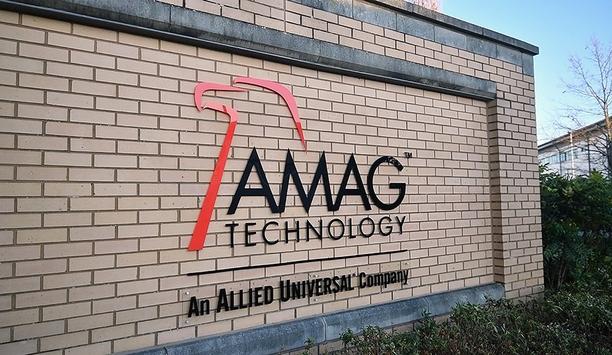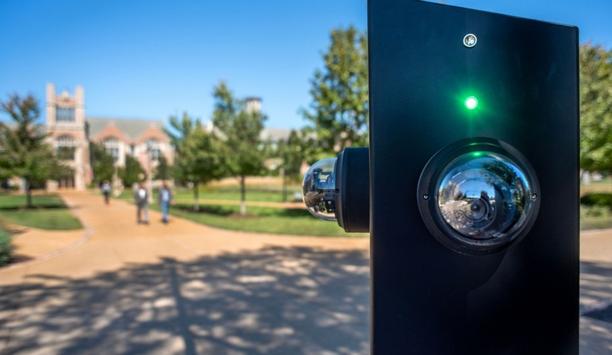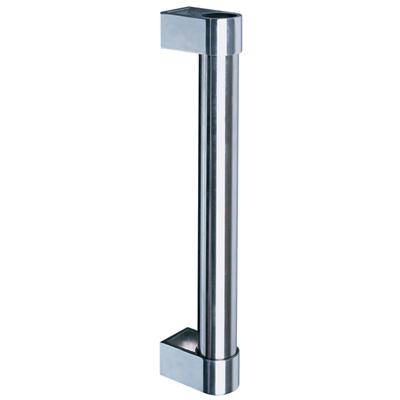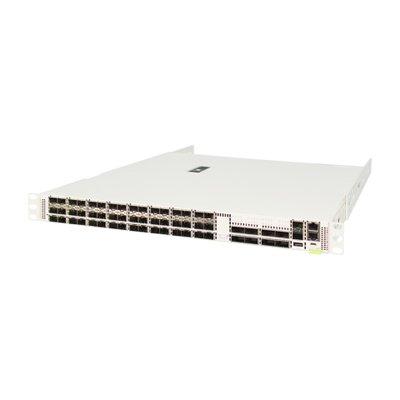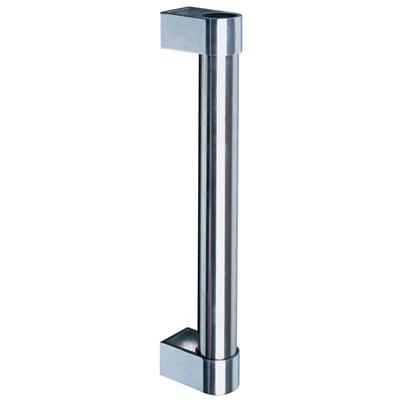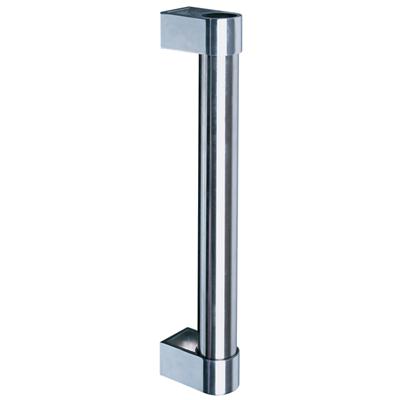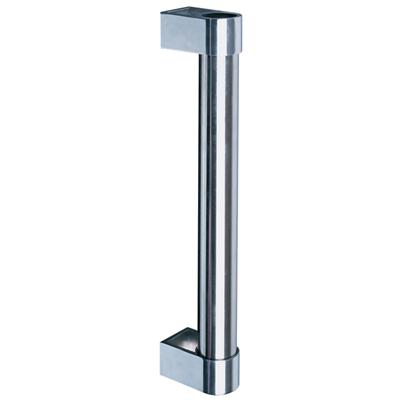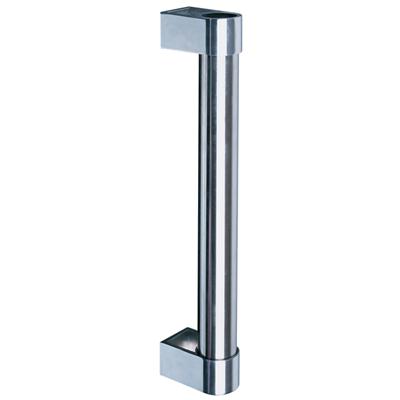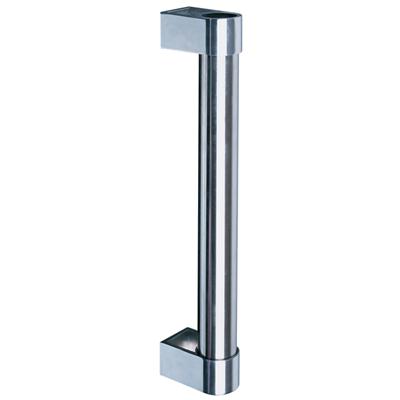Institute security
Asian IR Summit officially kicks off, May 6, at the Galaxy International Convention Centre in Macau, bringing together top executives from both local and international travel and integrated resort sectors. Over the next three days, industry pioneers will engage in high-level discussions, addressing the challenges shaping the future of the industry. The Asian IR Expo exhibition, co-located with G2E Asia, opens at May 7-9, at The Venetian Macao, with complimentary shuttle service to ens...
Richter, a consulting firm specialising in civil, structural and geotechnical engineering, has selected Red Helix, a market pioneer in cyber security and network performance, to strengthen its cyber security. The collaboration has empowered Richter to better manage IT risks, streamline compliance processes and successfully secure major infrastructure projects, including work on the UK’s high-speed rail project, HS2. Cybersecurity and risk management Operating within a globally interconn...
RecFaces, a pioneering developer of ready-made Facial Recognition software, is proud to announce the seamless integration of its cutting-edge facial biometric solution, Id-Gate, with Genetec Security Centre. This collaboration brings a new level of security, efficiency, and automation to access control and identity verification. GDPR compliance Id-Gate is a ready-made facial recognition software solution designed to enhance access control systems. It fully supports the GDPR compliance and can...
The G2E Asia Conference and Asian IR Summit are set to return this May, bringing top industry leaders together to tackle the most pressing issues and opportunities within the entertainment and integrated resort sectors. The G2E Asia Conference will be held from May 7-9, 2025, at The Venetian Macao, with the Asian IR Summit taking place from May 6-8, 2025, at the Galaxy International Convention Centre. Experts and key decision-makers Both events will feature a refreshed lineup of over 100 spea...
Frequentis Germany has been awarded the contract to plan and supply the operations and control centre system for the police of the Free State of Thuringia. As a general contractor, Frequentis is responsible for the installation and commissioning of all system components. These include Frequentis’ 3020 LifeX communication system, an operations control system from T-Systems Information Services GmbH, and the IT and network infrastructure provided by Siemens AG. Integrated communicati...
In an era marked by escalating cyber threats, Yubico, the pioneering provider of hardware authentication security keys, is proud to empower the future of cybersecurity pioneers by recently providing YubiKeys to over 20 youth-led hackathon and tech events through its Secure it Forward programme. Investing in youth-led organisations that run hackathons is a vital step for cybersecurity companies committed to fostering the next generation of security experts. Real-world cyber threats These...
News
The Association of University Chief Security Officers (AUCSO) - the pioneering global organisation for security professionals in Higher and Further Education - has celebrated the outstanding achievements of its members with the announcement of the winners of its prestigious 2025 Annual Awards. This year marked a record-breaking number of submissions across all award categories, highlighting the exceptional work being carried out on university campuses both in the UK and around the world. The winners were unveiled during a Gala Dinner on the final evening of the AUCSO Annual Conference, held at The Slate, University of Warwick. Winners The winners recognised for their exceptional work are: AUCSO Security Officer of the Year Winner: Peter Goddard, University of Exeter Highly Commended: Tom Meridith, University of Staffordshire This award recognises an outstanding security professional whose exceptional dedication, technical expertise, and infectious enthusiasm have made a significant impact on both the security team and the wider university community. As a subject matter expert in CCTV and SafeZone, Peter has enhanced operational capabilities through innovation and initiative. Peter’s approachable nature and proactive engagement have greatly enriched the student experience, while his role as a training instructor has extended his influence on staff, students, and the local community. A true role model, Peter continuously go above and beyond, inspiring colleagues and setting a high benchmark for professionalism and excellence in campus safety. AUCSO Security Team of the Year Winner: Oxford Brookes University Highly Commended: Northumbria Security Team This award celebrates a truly exceptional team whose unwavering commitment to safety, proactive crime prevention, and outstanding professionalism have made a profound impact on their university community. By organising over 120 awareness events on topics such as personal safety, online scams, and violence against women, launching a 24/7 helpline and online reporting tools, and building strong relationships with students and staff, the team at Oxford Brookes have greatly enhanced campus safety and trust. The team’s courageous and coordinated response to a serious firearm threat demonstrated remarkable composure and collaboration under pressure, ensuring the safety of all without disruption. Their partnership work with Thames Valley Police, Oxford City Council, and local charities further exemplifies their dedication - and their efforts were rightfully recognised with the 2024 National Acquisitive Crime Reduction Award for Exceptional Team. AUCSO Security Manager of the Year Winners: Lorna Wallington, University of York & Russell Wardle, Edinburgh Napier University This year’s award recognises not one, but two outstanding and dynamic Security Managers whose dedication, innovation, and leadership have set new standards in campus safety. Lorna began her career in the department in an administrative role, where she played a pivotal role in professionalising operations. She introduced systematic auditing and training improvements, raised the team’s profile, and became the lead for the SafeZone safety app. Recognising the team's strong performance, Lorna also identified strategic opportunities for further development, including rebranding the department’s uniform, fleet, and name to better reflect its evolving identity. As manager of the award-winning control room team, Lorna successfully led on a range of high-profile events, collaborating with multiple agencies to ensure seamless coordination and safety. Her leadership and vision earned her a promotion to Head of Campus Safety, where she has already made a significant impact—transforming the approach to protest management and student recruitment, and championing initiatives that have led to a more diverse and inclusive workforce. Russell played a key role in the implementation of the SafeZone app, focusing on modernising the university’s approach to safety and delivering a more efficient system for providing immediate support to staff and students. This innovation not only enhanced campus safety but also delivered significant cost savings for the university. At a time when resources were under considerable strain, Russell introduced meaningful improvements to student safeguarding. His initiatives helped reduce the risk of crime and ensured that survivors of incidents felt supported and reassured, with instant assistance available whenever needed. Together, Lorna and Russell’s achievements exemplify exceptional leadership and a deep commitment to safety and inclusivity. AUCSO Initiative of the Year Winner: Community Safety Team & Others, University of Birmingham Highly Commended: Julie Susel, University of Reading This award recognises an outstanding initiative that exemplifies effective partnership working between the university and local police to tackle Violence Against Women and Girls (VAWG). Through a dedicated six-month secondment, the team embedded themselves within the university community, forging strong collaborations with key stakeholders, including the Guild of Students. Their proactive engagement led to the development of innovative awareness-raising activities, such as the Welcome Week VAWG marquee, and involvement in the Guild’s ‘Not On’ campaign. By building trust and opening new communication channels, the initiative significantly increased student confidence in university and police efforts to address VAWG. Furthermore, the team’s support within the Safe and Well Partnership and the Report and Support platform has been instrumental in guiding victims and staff through police procedures, enhancing the overall response to incidents and reinforcing a culture of safety and support. Bill Blythe Award Adrian Dennehy, Cardiff Metropolitan University The Bill Blythe Award is named after the first recognised Chair of AUCSO who worked at the University of Liverpool. This award for outstanding service to the industry was awarded to Adrian Dennehy of Cardiff Metropolitan University. Adrian has been awarded this honour in recognition of his outstanding dedication, leadership, and unwavering commitment to AUCSO and the wider Higher Education security community. With a wealth of experience gained from his military background and academic achievements, Adrian brought a strategic, forward-thinking approach to campus safety and student wellbeing. Since joining the association, he has taken on numerous voluntary roles with passion and purpose - ranging from Regional Chair to business leads on car parking, criminal exploitation, and benchmarking. His efforts have shaped national conversations, supported member institutions, and strengthened AUCSO’s presence both online and across regions. Tirelessly stepping up where needed, including managing social media, briefing politicians, and ensuring financial accountability as a trustee, Adrian has left a lasting legacy. His absence from the Executive having stepped down, is deeply felt, a testament to the immense impact he has made. Risks and challenges Commenting on the winners, says: AUCSO Chair, Oliver Curran said: "We’ve received some truly outstanding nominations from University Security Teams, both across the UK and internationally. Each submission highlights the diverse risks and challenges these teams face daily, as well as the exceptional professionalism and innovation they bring to keeping their communities safe." "The shortlisted entries exemplify unwavering dedication, integrity, and passion. Every one of them would have been a worthy winner, and they stand as a true credit to our profession.” Incredible achievements AUCSO Chief Operating Officer, Julie Barker, added: “The Awards Gala Dinner is always a highlight of our year - a truly special evening where we come together to celebrate the incredible achievements of our members." "As Ollie mentioned, every nomination was deserving of recognition, and we hold deep respect for the outstanding actions and impact of our winners. Their exceptional dedication to the sector continues to inspire us all.”
Pioneering integrated fire and security systems business Evolution has opened its new flagship UK headquarters in Marlow to better serve and support the needs of its clients throughout the region, and beyond. The new state-of-the-art facility, located at Globe House – with quick and easy access to the M4 and M40, will provide a new account management, service and support base to enable the business to meet and exceed ever-changing client needs with its innovative and technical integrated service capabilities. Modern and spacious training centre It also features a modern and spacious training centre, to provide clients and workers with specialist It also features a modern and spacious training centre, to provide both clients and employees with specialist in-house training and development. “At Evolution, we’ve always been passionate about looking ahead, evolving our processes and capabilities to better support our clients”, says Richard Lambert, Managing Director at Evolution. Success of Evolution Lambert added: “Equally, we’ve always been committed to creating an environment where our employees can grow and be part of the success of Evolution, reflected by our move to employee ownership. Our team, which has grown to more than 200 people, thrived at Stag Place in Wooburn Green, but as we’ve expanded so has our need for more space." “After a targeted search along the M40 corridor, we’ve found the perfect fit in Globe House. We’re excited for the next chapter of the business, where together, we’ll continue to raise standards, exceed expectations, and continue to evolve every step of the way.”
Infosecurity Europe, the most influential information security event, which runs from 3-5 June 2025, has announced the launch of ‘Infosecurity Europe Masterclasses, powered by SANS Institute,’ an exclusive new training initiative designed to equip cybersecurity professionals with hands-on, practical skills. Developed for Infosecurity Europe 2025, the Masterclasses will offer three deep-dive sessions covering Digital Forensics, Cloud Security, and Security Culture. Digital Forensics and Cloud Security Digital Forensics and Cloud Security Masterclasses will be held on 3rd June, with the Security Masterclass Each masterclass will be delivered by a SANS-certified instructor and will take place in the South Gallery Rooms at ExCeL London during the event. The Digital Forensics and Cloud Security Masterclasses will be held on Tuesday, 3rd June, with the Security Culture Masterclass on Wednesday, 4th June. Partnership with SANS Institute Introducing these masterclasses highlights the growing demand for specialised training as organisations contend with an increasingly complex threat landscape. Infosecurity Europe has long been a hub for industry pioneers to share knowledge, explore innovative solutions, and foster collaboration. The partnership with SANS Institute builds on this and enhances the event's educational offering. Cybersecurity professionals with the practical skills "Partnering with Infosecurity Europe and bringing hands-on masterclasses to this year’s event is a pivotal moment to elevate security readiness across the UK and Europe. This collaboration will support cybersecurity professionals with the practical skills they need to stay ahead of emerging threats." "Continuous learning is essential in an industry that evolves at such a rapid pace, and by providing hands-on, immersive experiences, we are ensuring that security practitioners can apply cutting-edge techniques in real-world scenarios to make an immediate impact within their organisations," said John Davis, UK Director, SANS Institute. Infosecurity Europe’s 2025 Cybersecurity Trends Report Digital Forensics Masterclass will be led by SANS Certified Instructor Kathryn Hedley on Tuesday, 3rd June The masterclasses are designed to deliver practical, actionable insights and are tailored to help cybersecurity professionals tackle modern challenges head-on. The Digital Forensics Masterclass will be led by SANS Certified Instructor Kathryn Hedley on Tuesday, 3rd June, and will provide practical experience in decoding file signatures, data recovery techniques, and forensic disk image exploration. Attendees will learn how to extract and interpret critical digital evidence across platforms, equipping them with the skills to handle complex forensic investigations. This session aligns closely with industry demand, as over 50 per cent of organisations plan to increase investment in incident response and forensics according to Infosecurity Europe’s 2025 Cybersecurity Trends Report. Cloud security investment With 65 percent of cybersecurity pioneers also planning an increase in cloud security investment, the Cloud Security Masterclass on Tuesday, 3rd June, is key to guiding participants through advanced cloud security practices. Hosted by SANS Certified Instructor Simon Vernon, topics will include securing logging setups in Azure and preventing remote code execution. Infosecurity Europe’s report Infosecurity Europe’s report shows respondents citing a lack of accountability and identifying communication gaps On day two, Wednesday 4th June, the Security Culture Masterclass will be fronted by SANS Certified Instructor John Scott and directly addresses key challenges faced by organisations. Infosecurity Europe’s report shows respondents citing a lack of accountability and identifying communication gaps between departments as major obstacles to building a strong cybersecurity culture. This interactive session will address these challenges and more with a focus on embedding a resilient security culture within organisations. New Infosecurity Europe Masterclasses Participants will engage in the Cyber42 Game Day simulation, where they will navigate real-world decision-making scenarios to strengthen their leadership and cultural impact. Brad Maule-ffinch, Event Director at Infosecurity Europe, commented: "We are thrilled to be partnering with SANS Institute on our new Infosecurity Europe Masterclasses. Delivering high-quality, relevant content that meets the evolving needs of cybersecurity professionals is a core commitment for us, and SANS Institute is the ideal partner to help achieve this." "Their dedication to providing practical, actionable insights that attendees can immediately apply to their roles aligns perfectly with our vision for the Masterclasses, making this collaboration a perfect fit." Challenges in cybersecurity Infosecurity Europe 2025 will celebrate its 30th anniversary by bringing together industry experts, practitioners, and innovators to discuss and address the most pressing challenges in cybersecurity. Alongside the masterclasses, attendees will have access to a comprehensive programme of keynotes, panel discussions, and interactive workshops. Spaces for the masterclasses are limited, and early booking is recommended to secure a place and are priced at £299 + VAT, with lunch provided.
Custom Intelligent Security specialises in risk analysis, system design, installation, and maintenance of unified high-security solutions. Their extensive portfolio includes Government, commercial, and enterprise-level clients who demand scalable, secure, and robust security solutions. Next-generation security solutions barox Kommunikation is delighted to announce its partnership with Custom Intelligent Security barox Kommunikation is delighted to announce its partnership with Custom Intelligent Security, which includes providing the core network backbone for the integrated Genetec solution installed at Custom HQ ‘Experience Centre’ in Hertford. By choosing to partner with barox, Custom Intelligent Security has enhanced its industrial Ethernet switch capability - to deliver next-generation security solutions. Security network Bruno Amorelli, Director at Custom Intelligent Security, highlights the importance of this collaboration, explaining that ‘security should not only protect assets but also serve as a business enabler’. barox technology offers multiple benefits to maximise system up-time, reduce costs, and transform the way clients support their security network including deep-level integration with Genetec™ Security Centre. Custom Intelligent Security’s commitment The intuitive graphical interface and diagnostic tools of barox’s DMS system performance Other features include Active Camera Monitoring, remote re-boot of connected devices, sophisticated cable diagnostics, PoE monitoring, Active PoE Power-up Management, and Non-Stop PoE, all of which align with Custom Intelligent Security’s commitment to proactive engineering design. The intuitive graphical interface and diagnostic tools of barox’s Device Management System (DMS), further enhance system performance, ensuring reliability and peace of mind for customers. Integration with the Genetec dashboard barox’s network management Genetec integration provides flexibility and extended network diagnostics, as well as full access to all barox SNMP traps within Genetec Security Centre, offering a single unified user interface. barox’s seamless integration with the Genetec dashboard provides full visualisation and diagnostic reporting of real-time events. This capability, combined with advanced network management features, sets barox apart from other switch manufacturers. barox DMS and energy management tools Genetec has designated Custom Intelligent Security as a Unified Elite Partner for the installation and support The data-rich barox DMS and energy management tools available are particularly valuable in helping companies achieve their Net Zero targets. In addition, recognising the strength of their collaboration, Genetec has designated Custom Intelligent Security as a Unified Elite Partner for the installation and support of its Security Centre Platform. Improving reliability, sustainability, and cybersecurity “Quality of supply chain is very important to us, and barox’s extensive ‘off the shelf’ stock holding means that we can place orders with confidence,” says Bruno. “Their ISO 9001, 14001, and 27001 certifications, along with Cyber Allianz membership, reflect a strong service and support culture.” “Supporting our ethos of sustainable operations, barox's solutions align closely with Custom Intelligent Security's goals by enabling remote diagnostics and issue resolution. Utilising their advanced network management technology helps us to minimise environmental impact too." "The barox DMS enables us to work effectively, and in instances where device or network issues can be resolved through software, we can solve issues without the need to send an engineer to site, reducing the need for on-site interventions. This decreases our environmental impact, where we strive to operate as a ‘remote first’ company, using barox advanced technology to identify and resolve device and network issues remotely.” barox Ethernet switch integration Enhanced diagnostic data showing the status of cameras and switches on a graphical chart With barox Ethernet switch integration, enhanced diagnostic data showing the status of cameras and switches on a graphical chart, enables the fast pinpointing of network or device issues - enabling faults and outages to be diagnosed remotely. For example, if a network camera fails to respond, barox switches can be used to autonomously send a re-boot command, saving invaluable device downtime and in many cases can bring a device back online/resolve the issue with no engineer involvement. Video surveillance networks In the case of a security breach, devices can be disabled at the user level to maintain operation, whilst full remote control of PoE on ports allows Custom Intelligent Security to re-set or switch them off if required. This advanced capability has proven to be an invaluable asset and quite literally, ‘game-changing’ for Custom Intelligent Security in the management of their high security video surveillance networks. Key areas of access control In the case of a security breach, devices can be disabled at the user level to maintain operation “barox integration delivers strengthened cyber security between the camera, and command and control platform - including authentication certificate login,” Bruno continues. “This, combined with integration to Genetec Security Centre underpins our ability to create high quality security solutions, with our core offering built around the key areas of access control, CCTV, intruder alarms and systems integration." Genetec software support licence Bruno added: “Developed in reaction to the impact of the Covid pandemic, we devised a greatly enhanced ‘E-Service’, utilising notifications to conduct remote updates including antivirus updates and windows patching. Supporting our clients with a wraparound service, with our Software Support Maintenance Agreement, we’re committed to updating our clients’ software." "For example, for those operating a Genetec software support licence, we vigorously maintain up to date performance and protection - to prevent vulnerabilities occurring.” Hands-on experience Custom Intelligent Security will see the barox range represented and experience the full capabilities barox’s inclusion in the new Custom Intelligent Security HQ Experience Centre stems from a deep technical relationship between the businesses, promoting tailored product solutions for deployment in the high security/CNI space - realised with real-time physical demonstrations available for evaluation by Custom Intelligent Security’s end-user customers. Visitors to the Custom Intelligent Security will see the barox range represented and experience the full capabilities of the seamless barox Genetec Security Centre integration. Integration of barox switches “We’re thrilled to be offering a world-class demonstration facility to benefit our end-user and specifier customers,” says Bruno. “Custom Intelligent Security’s philosophy is to build close, long-term partnerships and professional relationships with every individual or company that we deal with. With our demonstration facility, we can show how the integration of barox switches and Genetec Security Centre can provide a unified security platform that blends security networks within a single intuitive interface, to simplify organisations’ operations.” Genetec Technology Partner Program “The Custom Intelligent Security HQ Experience Centre initiative is a perfect example of the added value the Genetec Technology Partner Program brings to our joint customers,” says Georges Tannous, Area Vice President, Genetec Inc. “Through barox and Genetec advanced integration, Custom Intelligent Security can further demonstrate the advantages of the unified platform in delivering intelligence, improving operations and other benefits beyond security.” Integration with Genetec Security Centre Sara Fisher, barox International Market Development Specialist commented: “barox is delighted to have been selected to be part of the Custom Intelligent Security Experience Centre initiative - a ‘centre of excellence’ for high security innovation. It’s fabulous to have the opportunity to showcase our technology integration with Genetec Security Centre, to enable end-user customers to choose integrated solutions from a pioneering industry installer of some of the best systems available.” barox products are currently employed within many high security, high profile and Critical National Infrastructure sites both in the UK and overseas.
Award-winning security manufacturer, Gallagher Security, is reflecting on the success of this year’s The Security Event 2025 held at Birmingham’s NEC from 8-10 April. Among a full-strength Gallagher Europe team, and attending his first TSE event, Gallagher Security, Executive Vice President – Europe, Spencer Marshall says, “TSE was a spectacular event, and provided the perfect platform to engage with Channel Partners, End Users, and members of the wider security industry." Current and emerging needs Marshall added: "These opportunities are so valuable to best understand the current and emerging needs of our industry, and to help us to shape the path forward, unlocking even greater value for our users through the power of our people and our solutions.” “Our team was proud to be showcasing some of our most recent cutting-edge innovations which are set to shake up the security industry, and we’re excited to be continually pushing boundaries and exploring what extra value our solutions can unlock. We’re in for an exciting year.” Gallagher's latest innovations Visitors to the Gallagher stand got to see up close the company’s latest innovations Visitors to the Gallagher stand got to see up close the company’s latest innovations, including the Controller 7000 product range, employee badge in Apple Wallet, perimeter solutions, and the recently released Quick Switch. QuickSwitch gives businesses a streamlined, simplified pathway to migrate from legacy systems to Gallagher’s world-class security solution. True to its name, installation is fast, reducing labour costs and minimising disruptions typical of a complex migration process. Redefines remote security Most importantly, QuickSwitch helps businesses mitigate risks associated with legacy systems, creating peace of mind through a platform that unlocks greater value. With three variants each covering multiple boards, businesses are empowered to make the switch from a multitude of systems. Also, a major talking point on the Gallagher stand, and available with the upcoming Command Centre v9.30 release, a game-changing solution that redefines remote security. This groundbreaking release makes securing even the most remote assets easier and more cost-effective, while also delivering superior oversight, insight, and control. Other powerful enhancements and integrations Gallagher team also received a plaque in honour of its Platinum partnership with the UK’s Skills for Security Launching with a suite of other powerful enhancements and integrations, v9.30 is one of the most advanced, feature-rich releases to date. During the event, the Gallagher team also received a plaque in recognition of its recent Platinum partnership with the UK’s Skills for Security, which supports the next generation of security professionals through their apprenticeship programmes. Next generation of security professionals Of the partnership, Gallagher Security European Marketing Manager – Europe, Bethan Thompson says, “As a company with people proudly at the heart of everything we do, our partnership with Skills for Security further acknowledges our commitment to people and remaining future-focused." "We know that the power of our success lies in our people, and we are thrilled to be joining forces to empower the next generation of security professionals.” Future of security systems Other highlights from this year’s event include Gordon Swallow, Sales Manager – UK South and European Technical Manager, Matt Wills taking part in panel discussions during the event. Matt Wills joined a discussion hosted by Lee Odess addressing; ‘Securing Europe's Foundations: Trends and Opportunities in Critical Infrastructure Protection,’ while Gordon Swallow joined a panel in the ASIS Networking Lounge to discuss ‘Technologies shaping the future of security systems.
AvePoint, the pioneer in data security, governance and resilience, announced the launch of its Risk Posture Command Centre within the AvePoint Confidence Platform, a single pane of glass to help organisations enhance their data security posture management (DSPM) with faster decision making and proactive risk mitigation. The Risk Posture Command Centre adds to AvePoint’s growing repertoire of Command Centres available in the AvePoint Confidence Platform, all designed to provide business and IT pioneers with the insights and recommended actions necessary to understand, manage, and mitigate potential vulnerabilities across their digital ecosystem. Data security needs with objectives Organisations persist in struggling with views of their data terrain, navigating multiple dashboards Organisations continue to struggle with fragmented views of their data landscape, navigating multiple dashboards and third-party tools to obtain critical components of DSPM, including data security, cloud backup, policy management, insights, and operational intelligence. 86% of organisations cannot balance their data security needs with business objectives, and when it comes to using AI, 47% of IT pioneers are either not very confident or have no confidence at all in their organisation’s ability to manage security and access risks. Data protection and security AvePoint's Risk Posture Command Centre eliminates this complexity, offering an intuitive interface that not only delivers immediate visibility into an organisation’s risk posture, but also provides actionable recommendations. This powerful combination enables organisations to quickly understand their data landscape and take precise, informed actions to enhance data protection and security within the AvePoint Confidence Platform. AvePoint Risk Posture Command Centre “For years, AvePoint has built engines to help our customers improve their risk postures, but now, with the AvePoint Risk Posture Command Centre, we’re making that easier to see and act upon, within one single pane of glass,” said John Peluso, Chief Technology Officer, AvePoint. “As data complexity threatens to overwhelm even the most sophisticated teams, we're providing a clear path forward, transforming potential data sprawl into a strategic advantage that drives innovation, reduces risk, and unlocks agility for every organisation.” The AvePoint Risk Posture Command Centre arms organisations with: Early Threat Detection: Comprehensive ransomware detection capabilities. Protection at a Glance: A unified view of data protection status, with a centralised dashboard displaying backup health and identifying potential data oversharing risks. Compliance Confidence: Insights into potential compliance vulnerabilities. Data Intelligence in Action: A visual representation of the data landscape, to offer actionable intelligence for risk mitigation and next steps for enhanced data protection and security. Generated Recommended Insights: Information to take immediate action on vulnerabilities and security risks. Security and success of AI investments AI Confidence Command Centre was AvePoint’s first Command Centre, helping corps assess the security Released earlier this year, the AI Confidence Command Centre was AvePoint’s first Command Centre, helping organisations assess the security and success of their AI investments. Its features allow organisations to evaluate their overall adoption performance of Microsoft 365 Copilot and understand change management success from enablement to adoption, while also noting potential risk factors. AvePoint's board-level strategy “AvePoint's Command Centres are more than a technology solution – they are a strategic transformation engine. By breaking down the traditional silos between technical teams and business leadership, these dashboards create a universal language of data intelligence,” said John Hodges, Chief Product Officer, AvePoint. “What was once confined to IT departments can now drive board-level strategy, turning raw data into a powerful narrative of organisational health, risk management, and future potential.”
The Association of University Chief Security Officers (AUCSO) - the pioneering global organisation for security professionals in Higher and Further Education - has celebrated the outstanding achievements of its members with the announcement of the winners of its prestigious 2025 Annual Awards. This year marked a record-breaking number of submissions across all award categories, highlighting the exceptional work being carried out on university campuses both in the UK and around the world. The winners were unveiled during a Gala Dinner on the final evening of the AUCSO Annual Conference, held at The Slate, University of Warwick. Winners The winners recognised for their exceptional work are: AUCSO Security Officer of the Year Winner: Peter Goddard, University of Exeter Highly Commended: Tom Meridith, University of Staffordshire This award recognises an outstanding security professional whose exceptional dedication, technical expertise, and infectious enthusiasm have made a significant impact on both the security team and the wider university community. As a subject matter expert in CCTV and SafeZone, Peter has enhanced operational capabilities through innovation and initiative. Peter’s approachable nature and proactive engagement have greatly enriched the student experience, while his role as a training instructor has extended his influence on staff, students, and the local community. A true role model, Peter continuously go above and beyond, inspiring colleagues and setting a high benchmark for professionalism and excellence in campus safety. AUCSO Security Team of the Year Winner: Oxford Brookes University Highly Commended: Northumbria Security Team This award celebrates a truly exceptional team whose unwavering commitment to safety, proactive crime prevention, and outstanding professionalism have made a profound impact on their university community. By organising over 120 awareness events on topics such as personal safety, online scams, and violence against women, launching a 24/7 helpline and online reporting tools, and building strong relationships with students and staff, the team at Oxford Brookes have greatly enhanced campus safety and trust. The team’s courageous and coordinated response to a serious firearm threat demonstrated remarkable composure and collaboration under pressure, ensuring the safety of all without disruption. Their partnership work with Thames Valley Police, Oxford City Council, and local charities further exemplifies their dedication - and their efforts were rightfully recognised with the 2024 National Acquisitive Crime Reduction Award for Exceptional Team. AUCSO Security Manager of the Year Winners: Lorna Wallington, University of York & Russell Wardle, Edinburgh Napier University This year’s award recognises not one, but two outstanding and dynamic Security Managers whose dedication, innovation, and leadership have set new standards in campus safety. Lorna began her career in the department in an administrative role, where she played a pivotal role in professionalising operations. She introduced systematic auditing and training improvements, raised the team’s profile, and became the lead for the SafeZone safety app. Recognising the team's strong performance, Lorna also identified strategic opportunities for further development, including rebranding the department’s uniform, fleet, and name to better reflect its evolving identity. As manager of the award-winning control room team, Lorna successfully led on a range of high-profile events, collaborating with multiple agencies to ensure seamless coordination and safety. Her leadership and vision earned her a promotion to Head of Campus Safety, where she has already made a significant impact—transforming the approach to protest management and student recruitment, and championing initiatives that have led to a more diverse and inclusive workforce. Russell played a key role in the implementation of the SafeZone app, focusing on modernising the university’s approach to safety and delivering a more efficient system for providing immediate support to staff and students. This innovation not only enhanced campus safety but also delivered significant cost savings for the university. At a time when resources were under considerable strain, Russell introduced meaningful improvements to student safeguarding. His initiatives helped reduce the risk of crime and ensured that survivors of incidents felt supported and reassured, with instant assistance available whenever needed. Together, Lorna and Russell’s achievements exemplify exceptional leadership and a deep commitment to safety and inclusivity. AUCSO Initiative of the Year Winner: Community Safety Team & Others, University of Birmingham Highly Commended: Julie Susel, University of Reading This award recognises an outstanding initiative that exemplifies effective partnership working between the university and local police to tackle Violence Against Women and Girls (VAWG). Through a dedicated six-month secondment, the team embedded themselves within the university community, forging strong collaborations with key stakeholders, including the Guild of Students. Their proactive engagement led to the development of innovative awareness-raising activities, such as the Welcome Week VAWG marquee, and involvement in the Guild’s ‘Not On’ campaign. By building trust and opening new communication channels, the initiative significantly increased student confidence in university and police efforts to address VAWG. Furthermore, the team’s support within the Safe and Well Partnership and the Report and Support platform has been instrumental in guiding victims and staff through police procedures, enhancing the overall response to incidents and reinforcing a culture of safety and support. Bill Blythe Award Adrian Dennehy, Cardiff Metropolitan University The Bill Blythe Award is named after the first recognised Chair of AUCSO who worked at the University of Liverpool. This award for outstanding service to the industry was awarded to Adrian Dennehy of Cardiff Metropolitan University. Adrian has been awarded this honour in recognition of his outstanding dedication, leadership, and unwavering commitment to AUCSO and the wider Higher Education security community. With a wealth of experience gained from his military background and academic achievements, Adrian brought a strategic, forward-thinking approach to campus safety and student wellbeing. Since joining the association, he has taken on numerous voluntary roles with passion and purpose - ranging from Regional Chair to business leads on car parking, criminal exploitation, and benchmarking. His efforts have shaped national conversations, supported member institutions, and strengthened AUCSO’s presence both online and across regions. Tirelessly stepping up where needed, including managing social media, briefing politicians, and ensuring financial accountability as a trustee, Adrian has left a lasting legacy. His absence from the Executive having stepped down, is deeply felt, a testament to the immense impact he has made. Risks and challenges Commenting on the winners, says: AUCSO Chair, Oliver Curran said: "We’ve received some truly outstanding nominations from University Security Teams, both across the UK and internationally. Each submission highlights the diverse risks and challenges these teams face daily, as well as the exceptional professionalism and innovation they bring to keeping their communities safe." "The shortlisted entries exemplify unwavering dedication, integrity, and passion. Every one of them would have been a worthy winner, and they stand as a true credit to our profession.” Incredible achievements AUCSO Chief Operating Officer, Julie Barker, added: “The Awards Gala Dinner is always a highlight of our year - a truly special evening where we come together to celebrate the incredible achievements of our members." "As Ollie mentioned, every nomination was deserving of recognition, and we hold deep respect for the outstanding actions and impact of our winners. Their exceptional dedication to the sector continues to inspire us all.”
Pioneering integrated fire and security systems business Evolution has opened its new flagship UK headquarters in Marlow to better serve and support the needs of its clients throughout the region, and beyond. The new state-of-the-art facility, located at Globe House – with quick and easy access to the M4 and M40, will provide a new account management, service and support base to enable the business to meet and exceed ever-changing client needs with its innovative and technical integrated service capabilities. Modern and spacious training centre It also features a modern and spacious training centre, to provide clients and workers with specialist It also features a modern and spacious training centre, to provide both clients and employees with specialist in-house training and development. “At Evolution, we’ve always been passionate about looking ahead, evolving our processes and capabilities to better support our clients”, says Richard Lambert, Managing Director at Evolution. Success of Evolution Lambert added: “Equally, we’ve always been committed to creating an environment where our employees can grow and be part of the success of Evolution, reflected by our move to employee ownership. Our team, which has grown to more than 200 people, thrived at Stag Place in Wooburn Green, but as we’ve expanded so has our need for more space." “After a targeted search along the M40 corridor, we’ve found the perfect fit in Globe House. We’re excited for the next chapter of the business, where together, we’ll continue to raise standards, exceed expectations, and continue to evolve every step of the way.”
Infosecurity Europe, the most influential information security event, which runs from 3-5 June 2025, has announced the launch of ‘Infosecurity Europe Masterclasses, powered by SANS Institute,’ an exclusive new training initiative designed to equip cybersecurity professionals with hands-on, practical skills. Developed for Infosecurity Europe 2025, the Masterclasses will offer three deep-dive sessions covering Digital Forensics, Cloud Security, and Security Culture. Digital Forensics and Cloud Security Digital Forensics and Cloud Security Masterclasses will be held on 3rd June, with the Security Masterclass Each masterclass will be delivered by a SANS-certified instructor and will take place in the South Gallery Rooms at ExCeL London during the event. The Digital Forensics and Cloud Security Masterclasses will be held on Tuesday, 3rd June, with the Security Culture Masterclass on Wednesday, 4th June. Partnership with SANS Institute Introducing these masterclasses highlights the growing demand for specialised training as organisations contend with an increasingly complex threat landscape. Infosecurity Europe has long been a hub for industry pioneers to share knowledge, explore innovative solutions, and foster collaboration. The partnership with SANS Institute builds on this and enhances the event's educational offering. Cybersecurity professionals with the practical skills "Partnering with Infosecurity Europe and bringing hands-on masterclasses to this year’s event is a pivotal moment to elevate security readiness across the UK and Europe. This collaboration will support cybersecurity professionals with the practical skills they need to stay ahead of emerging threats." "Continuous learning is essential in an industry that evolves at such a rapid pace, and by providing hands-on, immersive experiences, we are ensuring that security practitioners can apply cutting-edge techniques in real-world scenarios to make an immediate impact within their organisations," said John Davis, UK Director, SANS Institute. Infosecurity Europe’s 2025 Cybersecurity Trends Report Digital Forensics Masterclass will be led by SANS Certified Instructor Kathryn Hedley on Tuesday, 3rd June The masterclasses are designed to deliver practical, actionable insights and are tailored to help cybersecurity professionals tackle modern challenges head-on. The Digital Forensics Masterclass will be led by SANS Certified Instructor Kathryn Hedley on Tuesday, 3rd June, and will provide practical experience in decoding file signatures, data recovery techniques, and forensic disk image exploration. Attendees will learn how to extract and interpret critical digital evidence across platforms, equipping them with the skills to handle complex forensic investigations. This session aligns closely with industry demand, as over 50 per cent of organisations plan to increase investment in incident response and forensics according to Infosecurity Europe’s 2025 Cybersecurity Trends Report. Cloud security investment With 65 percent of cybersecurity pioneers also planning an increase in cloud security investment, the Cloud Security Masterclass on Tuesday, 3rd June, is key to guiding participants through advanced cloud security practices. Hosted by SANS Certified Instructor Simon Vernon, topics will include securing logging setups in Azure and preventing remote code execution. Infosecurity Europe’s report Infosecurity Europe’s report shows respondents citing a lack of accountability and identifying communication gaps On day two, Wednesday 4th June, the Security Culture Masterclass will be fronted by SANS Certified Instructor John Scott and directly addresses key challenges faced by organisations. Infosecurity Europe’s report shows respondents citing a lack of accountability and identifying communication gaps between departments as major obstacles to building a strong cybersecurity culture. This interactive session will address these challenges and more with a focus on embedding a resilient security culture within organisations. New Infosecurity Europe Masterclasses Participants will engage in the Cyber42 Game Day simulation, where they will navigate real-world decision-making scenarios to strengthen their leadership and cultural impact. Brad Maule-ffinch, Event Director at Infosecurity Europe, commented: "We are thrilled to be partnering with SANS Institute on our new Infosecurity Europe Masterclasses. Delivering high-quality, relevant content that meets the evolving needs of cybersecurity professionals is a core commitment for us, and SANS Institute is the ideal partner to help achieve this." "Their dedication to providing practical, actionable insights that attendees can immediately apply to their roles aligns perfectly with our vision for the Masterclasses, making this collaboration a perfect fit." Challenges in cybersecurity Infosecurity Europe 2025 will celebrate its 30th anniversary by bringing together industry experts, practitioners, and innovators to discuss and address the most pressing challenges in cybersecurity. Alongside the masterclasses, attendees will have access to a comprehensive programme of keynotes, panel discussions, and interactive workshops. Spaces for the masterclasses are limited, and early booking is recommended to secure a place and are priced at £299 + VAT, with lunch provided.
Custom Intelligent Security specialises in risk analysis, system design, installation, and maintenance of unified high-security solutions. Their extensive portfolio includes Government, commercial, and enterprise-level clients who demand scalable, secure, and robust security solutions. Next-generation security solutions barox Kommunikation is delighted to announce its partnership with Custom Intelligent Security barox Kommunikation is delighted to announce its partnership with Custom Intelligent Security, which includes providing the core network backbone for the integrated Genetec solution installed at Custom HQ ‘Experience Centre’ in Hertford. By choosing to partner with barox, Custom Intelligent Security has enhanced its industrial Ethernet switch capability - to deliver next-generation security solutions. Security network Bruno Amorelli, Director at Custom Intelligent Security, highlights the importance of this collaboration, explaining that ‘security should not only protect assets but also serve as a business enabler’. barox technology offers multiple benefits to maximise system up-time, reduce costs, and transform the way clients support their security network including deep-level integration with Genetec™ Security Centre. Custom Intelligent Security’s commitment The intuitive graphical interface and diagnostic tools of barox’s DMS system performance Other features include Active Camera Monitoring, remote re-boot of connected devices, sophisticated cable diagnostics, PoE monitoring, Active PoE Power-up Management, and Non-Stop PoE, all of which align with Custom Intelligent Security’s commitment to proactive engineering design. The intuitive graphical interface and diagnostic tools of barox’s Device Management System (DMS), further enhance system performance, ensuring reliability and peace of mind for customers. Integration with the Genetec dashboard barox’s network management Genetec integration provides flexibility and extended network diagnostics, as well as full access to all barox SNMP traps within Genetec Security Centre, offering a single unified user interface. barox’s seamless integration with the Genetec dashboard provides full visualisation and diagnostic reporting of real-time events. This capability, combined with advanced network management features, sets barox apart from other switch manufacturers. barox DMS and energy management tools Genetec has designated Custom Intelligent Security as a Unified Elite Partner for the installation and support The data-rich barox DMS and energy management tools available are particularly valuable in helping companies achieve their Net Zero targets. In addition, recognising the strength of their collaboration, Genetec has designated Custom Intelligent Security as a Unified Elite Partner for the installation and support of its Security Centre Platform. Improving reliability, sustainability, and cybersecurity “Quality of supply chain is very important to us, and barox’s extensive ‘off the shelf’ stock holding means that we can place orders with confidence,” says Bruno. “Their ISO 9001, 14001, and 27001 certifications, along with Cyber Allianz membership, reflect a strong service and support culture.” “Supporting our ethos of sustainable operations, barox's solutions align closely with Custom Intelligent Security's goals by enabling remote diagnostics and issue resolution. Utilising their advanced network management technology helps us to minimise environmental impact too." "The barox DMS enables us to work effectively, and in instances where device or network issues can be resolved through software, we can solve issues without the need to send an engineer to site, reducing the need for on-site interventions. This decreases our environmental impact, where we strive to operate as a ‘remote first’ company, using barox advanced technology to identify and resolve device and network issues remotely.” barox Ethernet switch integration Enhanced diagnostic data showing the status of cameras and switches on a graphical chart With barox Ethernet switch integration, enhanced diagnostic data showing the status of cameras and switches on a graphical chart, enables the fast pinpointing of network or device issues - enabling faults and outages to be diagnosed remotely. For example, if a network camera fails to respond, barox switches can be used to autonomously send a re-boot command, saving invaluable device downtime and in many cases can bring a device back online/resolve the issue with no engineer involvement. Video surveillance networks In the case of a security breach, devices can be disabled at the user level to maintain operation, whilst full remote control of PoE on ports allows Custom Intelligent Security to re-set or switch them off if required. This advanced capability has proven to be an invaluable asset and quite literally, ‘game-changing’ for Custom Intelligent Security in the management of their high security video surveillance networks. Key areas of access control In the case of a security breach, devices can be disabled at the user level to maintain operation “barox integration delivers strengthened cyber security between the camera, and command and control platform - including authentication certificate login,” Bruno continues. “This, combined with integration to Genetec Security Centre underpins our ability to create high quality security solutions, with our core offering built around the key areas of access control, CCTV, intruder alarms and systems integration." Genetec software support licence Bruno added: “Developed in reaction to the impact of the Covid pandemic, we devised a greatly enhanced ‘E-Service’, utilising notifications to conduct remote updates including antivirus updates and windows patching. Supporting our clients with a wraparound service, with our Software Support Maintenance Agreement, we’re committed to updating our clients’ software." "For example, for those operating a Genetec software support licence, we vigorously maintain up to date performance and protection - to prevent vulnerabilities occurring.” Hands-on experience Custom Intelligent Security will see the barox range represented and experience the full capabilities barox’s inclusion in the new Custom Intelligent Security HQ Experience Centre stems from a deep technical relationship between the businesses, promoting tailored product solutions for deployment in the high security/CNI space - realised with real-time physical demonstrations available for evaluation by Custom Intelligent Security’s end-user customers. Visitors to the Custom Intelligent Security will see the barox range represented and experience the full capabilities of the seamless barox Genetec Security Centre integration. Integration of barox switches “We’re thrilled to be offering a world-class demonstration facility to benefit our end-user and specifier customers,” says Bruno. “Custom Intelligent Security’s philosophy is to build close, long-term partnerships and professional relationships with every individual or company that we deal with. With our demonstration facility, we can show how the integration of barox switches and Genetec Security Centre can provide a unified security platform that blends security networks within a single intuitive interface, to simplify organisations’ operations.” Genetec Technology Partner Program “The Custom Intelligent Security HQ Experience Centre initiative is a perfect example of the added value the Genetec Technology Partner Program brings to our joint customers,” says Georges Tannous, Area Vice President, Genetec Inc. “Through barox and Genetec advanced integration, Custom Intelligent Security can further demonstrate the advantages of the unified platform in delivering intelligence, improving operations and other benefits beyond security.” Integration with Genetec Security Centre Sara Fisher, barox International Market Development Specialist commented: “barox is delighted to have been selected to be part of the Custom Intelligent Security Experience Centre initiative - a ‘centre of excellence’ for high security innovation. It’s fabulous to have the opportunity to showcase our technology integration with Genetec Security Centre, to enable end-user customers to choose integrated solutions from a pioneering industry installer of some of the best systems available.” barox products are currently employed within many high security, high profile and Critical National Infrastructure sites both in the UK and overseas.
Award-winning security manufacturer, Gallagher Security, is reflecting on the success of this year’s The Security Event 2025 held at Birmingham’s NEC from 8-10 April. Among a full-strength Gallagher Europe team, and attending his first TSE event, Gallagher Security, Executive Vice President – Europe, Spencer Marshall says, “TSE was a spectacular event, and provided the perfect platform to engage with Channel Partners, End Users, and members of the wider security industry." Current and emerging needs Marshall added: "These opportunities are so valuable to best understand the current and emerging needs of our industry, and to help us to shape the path forward, unlocking even greater value for our users through the power of our people and our solutions.” “Our team was proud to be showcasing some of our most recent cutting-edge innovations which are set to shake up the security industry, and we’re excited to be continually pushing boundaries and exploring what extra value our solutions can unlock. We’re in for an exciting year.” Gallagher's latest innovations Visitors to the Gallagher stand got to see up close the company’s latest innovations Visitors to the Gallagher stand got to see up close the company’s latest innovations, including the Controller 7000 product range, employee badge in Apple Wallet, perimeter solutions, and the recently released Quick Switch. QuickSwitch gives businesses a streamlined, simplified pathway to migrate from legacy systems to Gallagher’s world-class security solution. True to its name, installation is fast, reducing labour costs and minimising disruptions typical of a complex migration process. Redefines remote security Most importantly, QuickSwitch helps businesses mitigate risks associated with legacy systems, creating peace of mind through a platform that unlocks greater value. With three variants each covering multiple boards, businesses are empowered to make the switch from a multitude of systems. Also, a major talking point on the Gallagher stand, and available with the upcoming Command Centre v9.30 release, a game-changing solution that redefines remote security. This groundbreaking release makes securing even the most remote assets easier and more cost-effective, while also delivering superior oversight, insight, and control. Other powerful enhancements and integrations Gallagher team also received a plaque in honour of its Platinum partnership with the UK’s Skills for Security Launching with a suite of other powerful enhancements and integrations, v9.30 is one of the most advanced, feature-rich releases to date. During the event, the Gallagher team also received a plaque in recognition of its recent Platinum partnership with the UK’s Skills for Security, which supports the next generation of security professionals through their apprenticeship programmes. Next generation of security professionals Of the partnership, Gallagher Security European Marketing Manager – Europe, Bethan Thompson says, “As a company with people proudly at the heart of everything we do, our partnership with Skills for Security further acknowledges our commitment to people and remaining future-focused." "We know that the power of our success lies in our people, and we are thrilled to be joining forces to empower the next generation of security professionals.” Future of security systems Other highlights from this year’s event include Gordon Swallow, Sales Manager – UK South and European Technical Manager, Matt Wills taking part in panel discussions during the event. Matt Wills joined a discussion hosted by Lee Odess addressing; ‘Securing Europe's Foundations: Trends and Opportunities in Critical Infrastructure Protection,’ while Gordon Swallow joined a panel in the ASIS Networking Lounge to discuss ‘Technologies shaping the future of security systems.
AvePoint, the pioneer in data security, governance and resilience, announced the launch of its Risk Posture Command Centre within the AvePoint Confidence Platform, a single pane of glass to help organisations enhance their data security posture management (DSPM) with faster decision making and proactive risk mitigation. The Risk Posture Command Centre adds to AvePoint’s growing repertoire of Command Centres available in the AvePoint Confidence Platform, all designed to provide business and IT pioneers with the insights and recommended actions necessary to understand, manage, and mitigate potential vulnerabilities across their digital ecosystem. Data security needs with objectives Organisations persist in struggling with views of their data terrain, navigating multiple dashboards Organisations continue to struggle with fragmented views of their data landscape, navigating multiple dashboards and third-party tools to obtain critical components of DSPM, including data security, cloud backup, policy management, insights, and operational intelligence. 86% of organisations cannot balance their data security needs with business objectives, and when it comes to using AI, 47% of IT pioneers are either not very confident or have no confidence at all in their organisation’s ability to manage security and access risks. Data protection and security AvePoint's Risk Posture Command Centre eliminates this complexity, offering an intuitive interface that not only delivers immediate visibility into an organisation’s risk posture, but also provides actionable recommendations. This powerful combination enables organisations to quickly understand their data landscape and take precise, informed actions to enhance data protection and security within the AvePoint Confidence Platform. AvePoint Risk Posture Command Centre “For years, AvePoint has built engines to help our customers improve their risk postures, but now, with the AvePoint Risk Posture Command Centre, we’re making that easier to see and act upon, within one single pane of glass,” said John Peluso, Chief Technology Officer, AvePoint. “As data complexity threatens to overwhelm even the most sophisticated teams, we're providing a clear path forward, transforming potential data sprawl into a strategic advantage that drives innovation, reduces risk, and unlocks agility for every organisation.” The AvePoint Risk Posture Command Centre arms organisations with: Early Threat Detection: Comprehensive ransomware detection capabilities. Protection at a Glance: A unified view of data protection status, with a centralised dashboard displaying backup health and identifying potential data oversharing risks. Compliance Confidence: Insights into potential compliance vulnerabilities. Data Intelligence in Action: A visual representation of the data landscape, to offer actionable intelligence for risk mitigation and next steps for enhanced data protection and security. Generated Recommended Insights: Information to take immediate action on vulnerabilities and security risks. Security and success of AI investments AI Confidence Command Centre was AvePoint’s first Command Centre, helping corps assess the security Released earlier this year, the AI Confidence Command Centre was AvePoint’s first Command Centre, helping organisations assess the security and success of their AI investments. Its features allow organisations to evaluate their overall adoption performance of Microsoft 365 Copilot and understand change management success from enablement to adoption, while also noting potential risk factors. AvePoint's board-level strategy “AvePoint's Command Centres are more than a technology solution – they are a strategic transformation engine. By breaking down the traditional silos between technical teams and business leadership, these dashboards create a universal language of data intelligence,” said John Hodges, Chief Product Officer, AvePoint. “What was once confined to IT departments can now drive board-level strategy, turning raw data into a powerful narrative of organisational health, risk management, and future potential.”


Expert commentary
Access control solutions will continue their evolution in 2025 as organisations assess and adapt to dynamic and increasingly dangerous threats. Trends to watch include the growing adoption of mobile access credentials and digital IDs, and the integration of digital and physical security and other technologies. Other ongoing trends include the integration of AI into access control solutions and the increasing adoption of contactless biometrics for enhanced convenience. New access control innovations As these trends gather momentum, they highlight the pivotal role access control systems play in combining security and convenience, every hour of every day. Organisations must strike the ideal balance between a secure environment and satisfying user experience if they are to meet increasingly vocal demands for both. Achieving this balance not only delivers the expected user experience but also delivers multi-layered threat protection while introducing exciting new access control innovations. Digital technologies and open standards Modern access control solutions deliver a faster pace of innovation and dramatically improved capabilities Modern access control solutions deliver a faster pace of innovation and dramatically improved capabilities as compared to what was possible in the past. The primary objective is no longer simply to secure places and assets so they are beyond the reach of the wrong people. Now it also must be as easy as possible for authorised individuals to enter a building or access digital assets. Mobile access credentials and digital IDs are increasingly a preferred solution for achieving this seamless and convenient access experience. Technology convergence is happening at a rapid pace and this convergence makes it possible to integrate digital and physical security with real-time location systems and other technologies. Together, these converged technologies provide multi-layered protection against both cyber and physical threats while also enabling valuable new capabilities. 2024 State of Physical Access Control Report As AI is increasingly incorporated into access-control solutions, we will see even more powerful ways to leverage access control data for analytics use cases. Almost 40% of respondents to our 2024 State of Physical Access Control Report said they were looking to do this. Equally consequential is the rise of fast, frictionless and easy contactless biometrics solutions in a wide range of applications including healthcare, where 32% of respondents to our recent 2024 State of Healthcare Security Report said their facilities have already implemented this technology for authentication. Looking at the broader marketplace, nearly one in four (23%) respondents to our 2024 State of Physical Access Control Report cited biometrics when asked to “name the top three trends shaping the wider access control industry in the near future.” Evolution of access control solutions As access control solutions become increasingly central to secure and convenient daily life, these and other trends will have an ongoing impact on all market sectors from healthcare and banking to the corporate real estate enterprise and business and college campuses. At the same time, those responsible for a facility’s digital and physical assets know that these trends – and security in general – will never be a static proposition. The only constant is change. Threats will never stop evolving, and those tasked with protecting organisations against these threats must never stand still. The evolution of access control solutions that we saw during 2024 will continue through 2025 and beyond, and organisations will need to remain thorough and vigilant as they address today’s ever-expanding attack surfaces and ever-evolving attack schemes.
Digital access control has well-known benefits over traditional security, of course, but also costs attached to each stage of its lifetime. However, these costs are not fixed. Many factors – including building size, shape, type, location, national regulations and more – impact affordability and efficiency calculations. Crucially, the type of access solution a business selects – wired or wireless – impacts total operating costs, including during installation, running and any potential expansion or reconfiguration stages. Wireless installation Wiring premises can be expensive. So, the potential cost savings from choosing wireless digital access begin at the very start. Installation stage is the largest contributor to potential cost savings when businesses go wireless. In calculations for one report, access experts at ASSA ABLOY examined projected costs for a fictional 100-door installation. Labour savings for those who chose wireless over wired locks were 82.5%. Why? Firstly, because wireless installation is much faster. It is also less intrusive. Most wireless locking devices require little or no drilling of the door, whereas wired security needs cabling through and partly around a door – which means not just door damage, but the contracting of specialist electrical installers who may require multiple site visits. These costs add up. Digital access technology Torus aims for the highest level of LEED certification for all its new properties In Poland, for example, developer Torus aims for the highest level of LEED certification for all their new properties around Gdansk. Where possible, they choose products with Environmental Product Declarations (EPDs) and Green Circle documentation, favouring access solutions which reduce their carbon footprint. Wireless digital access technology is a natural choice. “The lack of wiring significantly reduces materials use, reduces costs, and ensures quick installation,” confirms Torus’ Roman Sokolowski. There’s no cabling, which cuts power consumption. There’s less damage to the building fabric and fitters make fewer journeys to and from the site. Adaptable locking solution By choosing a wireless solution, organisations also upgrade building security with little disruption. A wireless system makes it easier to improve security at an existing building via a retrofit process which does not inconvenience staff or disturb work routines. This was one goal at Plexal, a £15 million flexible work environment for London enterprise and academia. Plexal chose battery powered wireless locks integrated with DoorFlow, NetNodes’ online platform for managing and auditing building access. “Plexal required an adaptable locking solution for a range of different doors and, with no wiring required, it was quick and easy to install ASSA ABLOY Aperio® devices with minimal disruption,” confirms Stewart Johnson, Director at NetNodes. Cost savings with improved energy efficiency Choosing wireless over wired locking can play a vital role in reducing ongoing energy use Choosing wireless over wired locking can play an important role in reducing ongoing energy use – and, therefore, expenditure. Wholesale electricity prices in Europe are approximately double what they were in 2019, according to the IEA’s “Electricity 2024” report. For a variable cost such as energy, where businesses have little control over unit prices, it is critical to control usage, especially if high and/or changeable energy prices become what analysts at ING called “the new normal for business”. Thus, the fact that battery-powered locks consume much less energy than traditional wired solutions is increasingly relevant and important. Additional saving on energy costs Traditional wired door access devices often work via magnets connected permanently to mains electricity. These doors draw power around the clock to remain locked. Wireless locks work differently. They only “wake up” when presented with a credential, to make the access decision. This translates to an additional saving on energy costs during operation: more than 70%, or thousands of euros over a typical access system’s lifetime. Wireless digital access Wireless locks only need a change of their standard battery, which may be rechargeable Related energy and materials costs during in-use stage are also lower. Wireless locks only need a change of their standard battery – which may be rechargeable – typically once every two years. No specialist maintenance is required, saving on specialists and their travel to and from the site(s). By choosing wireless digital access, businesses help protect themselves against these ongoing costs, notably energy price increases and volatility. Cost-efficient flexible working, for staff and facilities managers Perhaps harder to quantify, but equally easy to imagine, the financial benefits of choosing a wireless digital solution are felt in the increased convenience and efficiency of daily operations. In the co-working sector, for example, flexible access to offices is a priority. As “fixed” office space rented by corporations continues to fall, co-working spaces are expected to keep growing, with one estimate suggesting almost 18% CAGR to 2030. To stand out from the competition, the founders of ULab in Alicante sought the latest innovations in access and design to create their 21st-century business centre. Part of the suite of digital access solutions from ASSA ABLOY, a SMARTair® system gave ULab real-time access management via battery-powered locks and Openowä, the Mobile Key solution for SMARTair, without any need to wire doors and other openings. SMARTair TS1000 Web interface With SMARTair and Openow, workspace residents can carry virtual keys on their smartphone With SMARTair and Openow, workspace residents can carry virtual keys on their smartphone; ULab’s security team update their rights over the air. An office manager can perform any operation remotely from the SMARTair TS1000 Web interface. In case of an emergency, they could lock-down the site or open doors remotely, for example. It’s convenient, efficient and boosts ULab’s security, benefiting users and managers. And because of SMARTair’s flexibility, they can comfortably welcome many more than their usual 100 daily users. “In addition to regular daily traffic, weekly traffic can almost multiply by 10 if an event is held,” says Enrique Burgos Pérez, Director at ULab. “We needed an access control system as flexible and convenient as SMARTair.” ASSA ABLOY benchmarking report Choosing wireless locks also adds flexibility – and can reduce costs – when an organisation reconfigures or expands their commercial space. High-quality wireless devices like SMARTair can typically be reinstalled at another opening without impacting reliability. They move to wherever is convenient. If a business is rethinking workspace to encourage flexible or hybrid work patterns, for example, cost efficiencies could be significant. Typical savings on office relocation or expansion are estimated at around 30% with wireless over wired locking, according to the same ASSA ABLOY benchmarking report. Cost efficiency and more control with ASSA ABLOY digital access To refit and improve their student accommodation, managers at the University of St Andrews sought energy- and cost-efficient access control. They chose Aperio, another innovative digital access solution from ASSA ABLOY. Approximately 1,600 doors so far are equipped with battery-powered Aperio escutcheons – without cabling. Aperio devices integrate fully with both the university’s existing central security system and their student ID card. University security managers continue to enjoy the efficiency benefits of monitoring and controlling access from a single point and in real-time, including for doors across multiple buildings. Aperio, another innovative digital access solution from ASSA ABLOY. Benefits of cost-efficiency In comparison to a wired solution, Aperio offers significant cost-efficiency benefits. Devices are wireless, so can be installed with little energy use and no need for wiring to the mains. They consume near-zero energy when idle and run on standard batteries, consuming little power during operation. Through the entire product life-cycle, Aperio combines reliability with cost effectiveness. “Aperio gives us central management and control,” says Pauline Brown, Associate Chief Information Officer at the University of St Andrews, “and contributes to our award-winning track record in energy efficiency.”
These days, business is more collaborative, adaptable and connected than ever before. In addition to offering new identities and access privileges, new applications and data also increase the attack surface available to cyber criminals, hacktivists, state actors and disgruntled insiders. These new identities need to be handled carefully. CISOs must develop an identity management strategy that is consistent across on-premises, hybrid and cloud systems. Good security is built on solid identity governance and administration (IGA) principles. From ransomware to supply chain intrusions, high-profile cybersecurity events frequently take advantage of weak identity and access management procedures. The Identity Defined Security Alliance found that 84% of organisations experienced an identity-related breach during its one-year study period. Robust IGA system Consequently, organisations need to find best-of-breed solutions for each section of the fabric Some of the most well-known cyber-attacks have not been made possible by a nation-state exploiting a remote zero-day vulnerability; rather, they have been made possible by something as basic as a hacked orphaned account. This resulted in lateral movement from an insecure platform to a high-value system, illegitimate privilege escalation or unsanctioned access to a computer system. To safeguard against such attacks, organisations must be aware of who has access to their systems and apps, and guarantee that access is revoked when it is no longer required. Here, a robust IGA system is helpful. It is not the whole picture, though; IGA is part of a larger identity fabric. A report by KuppingerCole noted that “Identity Fabrics are not necessarily based on a technology, tool or cloud service, but a paradigm for architecting IAM within enterprises.” The report pointed out that the paradigm is created using several tools and services. That’s because, contrary to marketing claims, no one vendor has a platform that provides all the needed elements. Consequently, organisations need to find best-of-breed solutions for each section of the fabric. Threats to the new corporate landscape Due to their exclusion from the corporate firewall and the security culture that comes with working on-site, remote employees and third parties are desirable targets for hackers. The transition to online office suites is another vulnerability that hackers are taking advantage of–for instance, through bogus authentication login dialogues. Additionally, hackers are using technologies like machine learning and artificial intelligence to circumvent current security tactics. A cyberattack powered by AI will imitate human behaviour and develop over time. Even publicly available information might be used by this "weaponised AI" to learn how to get past a target’s defences. CISO and the business users Attackers will finally find an entryway, but firms can protect the new perimeter–their identities It's no longer possible to secure the traditional perimeter. Attackers will eventually find an entryway, but businesses can protect the new perimeter–their identities. To defeat these threats, organisations must look again at identity and access management tools and how they are weighed against the impact on the organisation. Should you mandate multi-factor authentication (MFA) more often and earlier? Should only company-owned devices have access to networks, or should access be restricted to specific business hours or regions? Should access to sensitive information and critical systems be given just temporarily or should it be offered on a task-by-task basis? Both the CISO and the business users they assist should be asking these questions. Staying ahead of threats with identity Access control limits decrease dangers but can come with a cost. If you give your users too much access, your organisation becomes susceptible; if you give them too little, productivity suffers. But there are ways to strike a balance with security, compliance and productivity. More CISOs are turning to Zero Trust–which is based on the principle of maintaining strict access controls and not trusting anyone by default–to protect their systems from new attack types. However, Zero Trust is reliant upon having a thorough and baked-in strategy that underpins it. Other actions that companies can take include implementing automation for identity management, such as automating workflows for approval. This would significantly lessen the administrative burden and friction that security solutions like multifactor authentication (MFA) or time-restricted access to critical systems have on business users. This might include restricting access to particular devices, capping access hours during the day or enforcing MFA based on user behaviour. Identity fabric: Putting it all together Make sure your identity architecture is scalable, secure, and provides a seamless user experience These are just two elements of the identity fabric approach. Most organisations today have implemented pieces of an identity fabric, which is basically an organisation’s identity and access management (IAM) infrastructure and typically includes a mix of modular IAM solutions for multi-cloud and/or hybrid environments. Now, organisations need to define, enhance and develop this infrastructure. They must also institute guiding principles for how it should operate, meet current and future business requirements as well as identity-related cybersecurity challenges. In doing so, businesses can move past identity platforms and adopt an identity fabric perspective. The key is to make identity governance the starting point of your identity fabric strategy, ensuring seamless interoperability within your identity ecosystem. Make sure your identity architecture is scalable, secure, and provides a seamless user experience. Aligning security with business Due to the increase in knowledge workers using the cloud and working remotely, attackers are focusing on this group. These employees are easier to compromise, give access to valuable data and offer more attack targets. Knowledge workers also lack an administrator’s level of security expertise. Therefore, as part of their security fabric strategy, enterprises require a scalable IGA system. It is easier to comply with security and access regulations and takes less time for IT teams to do normal administrative activities when they invest in IGA, a crucial tenet of identity security. CISOs and boards, though, are currently looking at more than identity management. IGA is at the centre of the debate about security and governance. Taking an identity fabric-based approach, with a foundation built on modern, cloud-based IGA, will safeguard identities, increase productivity, and make staff adherence to organisational procedures easier.
Security beat
The practice of executive protection changed forever on Dec. 4, 2024, when UnitedHealthcare CEO Brian Thompson was shot outside a Manhattan, New York, hotel. The shocking event raised awareness in board rooms around the world about the need for, and challenges of, executive protection. Questions followed immediately, including why was the high-level executive not protected? Combination of risk and reward UnitedHealthcare’s stock price has gone down more than 20% since the shooting The event also highlighted what is at stake for companies, extending beyond the safety of executives and impacting many factors, even including a company’s stock price. UnitedHealthcare’s stock price has gone down more than 20% since the shooting, equating to tens of billions of dollars. “Companies are considering the combination of risk and reward like never before when it comes to executive protection,” says Glen Kucera, President of Allied Universal Enhanced Protection Services. “What are the chances this could happen? Before Dec. 4 many thought it was zero. And what are the financial implications for a company if it happens? Executive protection is a small investment to protect against a worst-case scenario.” Evaluation of an executive protection Before the UnitedHealthcare shooting raised awareness, fewer than 50% of executives had protection. But concerns that previously fell on deaf ears now have the full attention of companies, says Kucera. “Boards of directors are having to figure this out,” he adds. “They may not have executive protection, but now they have to do it.” A threat assessment, conducted by a company such as Allied Universal, provides an independent evaluation of a company’s executive protection needs. The assessment evaluates factors such as an executive’s travel habits, the safety of their home, etc. Does the executive need protection 24/7, or just when they travel into more dangerous areas? Risks increase related to corporate earnings Sometimes, cases increase the need for executive protection, such as an internal threat In assessing threats, security professionals also look beyond the individual to consider the safety of a corporate facility, for example. “Is there a visual deterrent, controlling who comes and goes?” asks Kucera. “If there is good security, it all ties together. We do home assessment, facility assessment, route assessment, and travel assessment as needed.” Sometimes, circumstances increase the need for executive protection, such as an internal threat. Timing is a factor, and risks increase related to corporate earnings releases, new product announcements, and corporate layoffs or consolidation. Monitoring social media tracks shifting threats that impact the need for executive protection. UnitedHealthcare shooting “He didn’t have it and probably didn’t think he needed it,” comments Kucera about the UnitedHealthcare executive who was gunned down in the streets of New York City. “He was staying at the hotel across the street and was used to walking down the street every day.” “Sometimes executives want to preserve their privacy and be able to walk down the street,” says Kucera. “Getting protection can be seen as a sign of weakness. Some CEOs in the past have said they just didn’t want it.” However, the UnitedHealthcare shooting raised the stakes of the need for more vigilance. “The bottom line is you have to yet beyond objections and make the investment to protect against a worst-case scenario,” says Kucera. Anti-capitalist sentiment in the general population An internal police bulletin warned of an online hit list naming eight executives and their salaries Threats to executives sometimes arise from anti-capitalist sentiment in the general population about perceived inequalities in wealth and power. Executives provide symbolic targets for anyone who fights the system, and social media has amplified the voices of those who oppose capitalism. For example, a "Most Wanted CEO” card deck seeks to shine a spotlight on "titans of greed." Also, in the aftermath of the UnitedHealthcare shooting, CEO "wanted" posters appeared across New York City, threatening various executives of large companies. An internal police bulletin warned of an online hit list naming eight executives and their salaries. Careful monitoring of social media posts Careful monitoring of social media posts and other sources enables executive protection professionals to analyse data and separate the dangerous threats from the merely negative ones. Sadly, positive support of the UnitedHealthcare shooting was expressed by the 300,000 or so followers of the shooter, who became a celebrity of sorts. A huge outcry of negative sentiment toward the insurance industry led to fear that copycat incidents might occur. “There has been an unprecedented amount of positive support for committing murder,” commented Kucera. Executive protection requests HR executives can be at risk, especially at a time of layoffs or consolidation “Let’s face it, there has been a lot of controversy, from COVID to the Middle East crisis, to the political campaign, and there is negativity on both sides,” says Kucera. “People have opportunities to pick sides, and there is a lot of sentiment going both ways, and there is a small percentage of people who will act aggressively.” Executive protection requests now extend beyond the CEO to include others in the management ranks of companies. Basically, any public-facing executive is at risk, including anyone who makes statements to the press. Human resource (HR) executives can be at risk, especially at a time of layoffs or consolidation. Private information on the Internet Typically, an executive is assigned a single armed operative for protection. The firearm serves primarily as a visual deterrent that hopefully makes a potential perpetrator think twice. “When they plan an event like this, their expectation is that it will be a soft target,” says Kucera. “If there is an officer, it gives them pause.” Controversial or high-profile CEOs are typically protected 24/7, including when they travel with their family. Adding risks is the fact that private information is now posted on the Internet, including where an executive lives and where their children go to school. Internet monitoring Internet monitoring also includes the “dark web,” which includes sometimes dangerous information “We offer social media monitoring, and we advise them to be more careful with what they post,” says Kucera. “We monitor reactions to posts including any that might be threatening. We watch social media carefully if a company announces earnings or a change in their service or product offering.” Internet monitoring also includes the “dark web,” which includes sometimes dangerous information that is intentionally hidden and requires specific software, configurations, or authorisation to access. Own layer of protection Public and government officials can also come under fire in a variety of scenarios. FEMA officials faced threats after the recent floods in the Southeast, for example, among other situations where perceived unfair treatment promotes thoughts of retribution. Although government agencies have their own layer of protection, there are instances when they call on companies such as Allied Universal for additional help. Ad hoc protection for various executives In the aftermath of the UnitedHealthcare shooting, calls to Allied Universal’s Command Centre increased by 600%, reflecting requests for ad hoc protection for various executives. These requests are in addition to the company’s business providing “embedded” operatives that travel with executives all or some of the time. On that side of the business, requests for services are up probably 300%, says Kucera. {##Poll1742194323 - Has the recent increase in violent threats changed your company's view on executive protection?##}
GSX 2023 has its share of new product announcements, although many of the new products are enhancements to technologies shown at last spring’s ISC West show in Las Vegas. Booth traffic on the first day seemed busy at the Kay Bailey Hutchison Convention Center in Dallas, although one exhibitor complained that it takes some time for the traffic to make its way to the farthest areas of the show floor. Apparent throughout the GSX show is an expanding idea of what constitutes security. Increasingly, ‘security’ technologies offer benefits throughout other parts of a company or institution. Security is also being broadened to encompass ‘safety,’ including emergency response and wider issues of keeping a company safe. Managing multiple systems People look at the systems they have, and they are looking for more information" Manufacturers at GSX are talking about more than new products. Rather, they are offering new approaches to turn products into ‘solutions’ for customers. Among the benefits of new systems is the availability of more data. “People look at the systems they have, and they are looking for more information and data and insights from their systems,” says Kyle Hurt, Genetec’s Area Vice-President of Sales for the US and Canada. “In the past, if I’m managing multiple systems and spending time and resources, I am making sure systems are operational. Today, it’s more like: How do I make my enterprise more efficient? I spend less time on making sure systems are working together but more time on how we can use the information.” Manufacturers at GSX are talking about more than new products Security control room Genetec is enhancing its Security Center 5.11 version with a newly redesigned web client that provides new capabilities related to system audio, including the ability to trigger a public address from a mobile device in an emergency, two-way audio to and from the security operations centre, and the ability to record an incident. The new web client offers new levels of “Security on the go,” says Hurt. A mobile device becomes an extension of the security control room. “Customers want to have more remote capabilities and have their security personnel out and about, not tied to a desk,” says Hurt. The new web client works to unify the four pillars of the Security Centre— video, access control, license plate recognition, and now audio. Single source manufacturer Audio can now be used to broadcast a message, respond to an incident, and notify people" “Audio has taken time to develop legs in our ecosystem,” says Hurt. “We have been developing partnerships and use cases beyond an intercom at the door. Audio can now be used to broadcast a message, respond to an incident, and notify people en mass of what’s going on.” Manufacturers are also fine-tuning how they work to meet customers’ needs. “Customers want one point of contact, a single source manufacturer, and a solution that reflects the manufacturer is listening to the voice of the customer,” says Jerry Burhans, Managing Director of ASSA ABLOY Global Solutions - Critical Infrastructure, which seeks to be a global partner to critical infrastructure industries. The Critical Infrastructure business works across the various product groups of the notoriously siloed company to bring together solutions aimed at meeting each customer’s need. Manufacturers are also fine-tuning how they work to meet customers’ needs Best-in-class technology “We try to have best-in-class technology and collaborate within ourselves to make sure we have what customers need,” says Burhans. Critical infrastructure industries such as water, power and energy, oil and gas are developing standards to help support preparedness of the nation’s infrastructure, and ASSA ABLOY Global Solutions is helping operators secure access and provide audit trails on locking hardware and keys within their security perimeters. Managing customer assets Johnson Controls’ new OpenBlue Service for the security device market seeks to proactively manage customer assets (equipment) as a service. The company’s software platform of connected solutions monitors and manages security devices across vendors and provides remote support services including skilled engineers who can work to ensure that a company’s assets, including cameras and access control readers, operate dependably. Working remotely, OpenBlue analyzes the performance of each system component Johnson Controls estimates that, unfortunately, up to 25% of a company’s security assets may not be working as intended, whether they lack the latest firmware update or are not connected. Working remotely, OpenBlue analyses the performance of each system component and responds to ensure equipment operates as intended. “We believe we can close that gap with our solutions,” says Greg Parker, Vice President, Innovation & Portfolio Management for Johnson Controls. Physical security equipment A big advantage of OpenBlue for security customers is the ability to manage cybersecurity and threats at the edge, which may not currently be addressed by the IT department. The OpenBlue offering includes an embedded ‘air wall,’ which is a zero-trust architecture for physical security equipment. OpenBlue also helps customers manage the ever-changing lifecycles of various assets. Another concept prompting discussion at GSX 2023 is the gap between what a customer expects from a product and what the product can realistically deliver. With endless promotion in the last several years centring on concepts such as artificial intelligence (AI), is it any wonder that customers may sometimes have unrealistic expectations about what a technology can accomplish? The good news at GSX is that, as progress marches on, newer technologies are getting closer and closer to delivering on customers’ most ambitious expectations. The forward momentum of technology development is evident throughout the GSX 2023 show floor, reflecting the promise of even greater product capabilities in months and years to come.
A pioneer in the access control sector since 1971, AMAG Technology is looking to the future and the next generation of products that will expand its services to customers. “In our vision, we have advanced approaches that will not only provide our partners with advanced technologies but also ones that are easier to install with tools to expand their services,” says David Sullivan, who was appointed President of the venerable access control company in September 2022. New challenges at AMAG Sullivan brings a new outlook to the AMAG business, a part of Allied Universal, and a new vision to lead the company into the future. We caught up with David Sullivan to discuss his new challenges at AMAG and the journey ahead as the company looks to the future. Q: How does your background inform your approach to leading AMAG? I believe that it helps me to define a vision for AMAG that will be unique and on the leading edge of our industry David Sullivan: With the exception of only a few short years, my career has been in access control. I have experience with several systems and have had the privilege to manage several successful access control companies. As a result, I bring a great deal of experience into my role at AMAG. I believe that it helps me to define a vision for AMAG that will be unique and on the leading edge of our industry. Q: How would you describe AMAG’s journey over the last several years and how do you see the future? Sullivan: Prior presidents of AMAG always shared their leadership vision and direction with senior leaders located in the United Kingdom. This had an impact on the full direction of the business, sometimes limiting its ultimate success. Before I became a part of AMAG, these senior leaders that were located in the UK retired, placing for the first time the full management responsibilities of the president. This has allowed me to integrate the business into a single team, with single objectives, and a single vision. We expect to begin to reveal this new vision in the coming weeks. We are excited about the future of AMAG and believe we will surprise the industry with our new products and approach in the coming months and years. Q: How important is it that a manufacturer provides both hardware and software solutions? How does AMAG’s approach (in general) differentiate it in the market? We can design the complete solution, providing functionality that others may find more difficult to accomplish Sullivan: Regardless of the manufacturer, we all provide hardware and software. An access control solution is not complete without both. Some of us choose to make our panels, and others do not. Those who are dependent on third-party suppliers are restricted to the developments and direction of that company, and while it might be perceived to be an open technology, it still is proprietary to the hardware manufacturer. AMAG has controlled its manufacturing of panels from day one. The result means that we can design the complete solution, providing functionality that others may find more difficult to accomplish. Q: How does the breadth of AMAG’s product suite provide advantages to customers and/or integrators? Sullivan: AMAG’s product portfolio is unique and provides the end user with an end-to-end identity management solution from one company. Our Control Room PSIM, Symmetry CONNECT Identity Management Solution, Symmetry Access Control, and Symmetry GUEST solutions all integrate to provide the user with a broad set of features and capabilities from a single provider. There is no finger-pointing when we come to support your system. We hold full responsibility for making it work and can quickly provide a resolution to any application difficulties the user may be experiencing. Q: How does AMAG address the divide between on-prem and cloud systems? How do you help customers make the transition and/or plan for the future? We are in the early stages of developing our next generation of access control in which we intend to provide on-prem Sullivan: In our current product portfolio, we have three products that are cloud-based. Our mobile credential platform (Symmetry Mobile), our visitor management solution (Symmetry GUEST), and our physical identity and access management solution (Symmetry CONNECT) are all offerings that operate in the cloud. We are in the early stages of developing our next generation of access control in which we intend to provide on-prem, web client, and cloud-based offerings. One of the primary objectives is to ensure that the large installed base of systems that are out there today will be able to migrate not only to our next generation but as well to the cloud if the client so desires. Q: What is AMAG’s approach to mobile credentialing? Sullivan: As an access control provider, adding Symmetry Mobile credentialing to our portfolio just made sense. We want our customers to have a forward-thinking solution with the opportunity to save money not only on the physical badges but the cost of printing and distributing badges. Mobile credentials can be easily issued and revoked remotely, reducing administrative overhead, and eliminating the need for physical inventory management. Organisations can centrally configure what devices are used and the read range for each type of device and operating system, thus providing flexibility. Symmetry Mobile offers a customised questionnaire that controls access and reduces liabilities. Q: What has surprised you the most in your first year or so leading AMAG? Not many companies are blessed with such a broad portfolio that is supported by a resource-rich company Sullivan: I wouldn’t say I was surprised by this as much as happy to see, but I would say that the quality of our people was a pleasant surprise. As well, the AMAG product offering is broad and has some unique elements. When coupled with the depth of the resources that we have in AMAG, I know that we are second to none. Not many companies are blessed with such a broad portfolio that is supported by a resource-rich company that has so many talented people. Q: Please describe your dealer channel, and how you are seeking to expand it. Sullivan: The AMAG products are sophisticated and typically are installed for higher-end applications. With this sophistication comes a need to be well able to install such a solution. We have a strong group of certified and loyal partners who help us to deliver these enterprise solutions. We desire to provide our existing partners with updated and competitive systems to offer to their end users. Q: What is the security industry’s (and/or AMAG’s) biggest challenge in the next five years? We need to find ways to provide both our channel partners and the customers with solutions that are easily integrated Sullivan: I believe that the advancements that we are seeing in technology provide our industry with the opportunity to truly change how security is provided to our collective customers. As we advance these solutions, we will need to do so responsibly and in a way that helps the channel’s abilities. We need to find ways to train our partners to both install and support these more complex solutions. At the same time, we need to find ways to provide both our channel partners and the customers with solutions that are easily integrated, moving away from proprietary closed systems to open and cohesive solutions. This will ensure that the users get the best, and most complete solutions. Q: What does the industry as a whole misunderstand about AMAG -- time to set the record straight! Sullivan: Well, I am not ready to openly share where we are heading. We are in the process of putting together some advanced approaches to how we will do business with our partners. We are focused on providing tools that will enhance their services to their customers, and with products that are leading edge. I can only state that all should keep their eyes on AMAG, because over the next few years, we are going to surprise some people, and more importantly make our loyal partners quite powerful.
Case studies
The City of Edinburgh is the capital of Scotland and the second most populous city in the country. It is the seat of the Scottish Government and the official residence of the British monarch in Scotland. As well as serving a vital role in government, the city is economically significant for the region, attracting global tourism as well as being home to a world-renowned university. Protecting citizens and visitors as they move through the city and keeping Edinburgh’s roads running smoothly is of the utmost importance. Transforming into a smart city City of Edinburgh Council leadership modernises security and surveillance across the capital The City of Edinburgh Council leadership needed to modernise security and surveillance across the capital. This involved upgrading the control centre to a new smart city operations centre to receive real-time data from Edinburgh’s surveillance network. The centre also integrates with traffic and transport platforms to enhance operational management and improve city planning. Hanwha Vision IP cameras The new control centre gives operators access to real-time data and analytics, for insights that improve response times and situational awareness. Smart technology solutions provider, North, designed a security solution built with more than 100 high-resolution Hanwha Vision IP cameras including the PNM-9322VQP multi-directional PTZ camera and XNO-8080R 5MP IR bullet camera. The solution also incorporates a video management system from Genetec. Comprehensive coverage and intelligence Multi-directional cameras are ideal for monitoring large and complex areas such as city centres Multi-directional cameras are ideal for monitoring large and complex areas such as city centres. The multi-directional PNM-9322VQP features five camera sensors in a single device, minimising the amount of cabling and server infrastructure required compared to installing five separate devices, to improve cost-efficiency while streamlining installation. The XNO-8080R is a 5MP IR bullet camera with accurate video analytics. These analytics - carried out on the device to reduce server needs - include loitering, directional detection, audio detection and sound classification. It features Hallway View to cover narrow areas such as alleyways. Additionally, using the proprietary compression technology WiseStream II improves bandwidth by up to 75% while retaining video quality. Best-in-class cybersecurity Cybersecurity is crucial in a smart city, given the number of connected devices that could be exploited. Hanwha Vision has been hardening its cybersecurity measures for many years with the National Defense Authorization Act compliance (NDAA), UL CAP Certification, and a dedicated security vulnerability response team (S-CERT). Furthermore, North is part of Genetec’s “network of trust” initiative, signalling the close partnership between the two solution providers and their shared focus on securing network and critical surveillance infrastructure. Low-carbon technology Hanwha Vision has been hardening its cybersecurity measures for many years with the NDAA “The new operations centre has been years in the making and it’s fantastic to see it live in action,” said Councillor Jane Meagher, Council Leader, The City of Edinburgh Council. “With cutting-edge low-carbon technology designed to keep the city moving and our communities safe, it drastically steps up our capabilities as a council. Edinburgh is fast becoming an example of a truly smart city and it’s thanks to trailblazing projects like this.” New video surveillance system Andrew Foster, MD – Public Services at North, added: “Helping to drive positive change through smart technology and improved operational systems across Edinburgh is something that North is incredibly proud of. Working together, the city now has access to real-time data that will influence the future of city planning, improve large-scale events and create a greener environment for generations to come.” The new video surveillance system provides Edinburgh with a future-proofed smart city solution with the option to expand and add connected devices such as air quality sensors, smart parking applications and flood sensors.
The university encountered a significant challenge with the competitor’s attendance tracking solution for its teaching staff. Seeking a more precise and seamless method of capturing daily attendance across multiple campuses, the institution aimed to establish a centralised platform for attendance management. The key objectives included enhancing ease of access for employees to view their attendance records and efficiently manage leave requests. A notable consideration was the need for a specialised provision to accommodate professors who frequently moved across campuses for lecture commitments. This case study delves into the university’s pursuit of a robust attendance management solution for 3000 users to address these specific challenges and optimise operational efficiency. Challenges The major challenges that the university faced for the smooth operation of Its Attendance Management System were: Inefficient Existing Attendance Management Solution: The university encountered difficulties with a competitor’s attendance management system, which proved more cumbersome than facilitative. Managing attendance across various faculties became a challenge, exacerbating complications in understanding university-level payroll processing. Irregularity in Daily Attendance Marking for Teaching Staff: A critical requirement for the university was the seamless daily marking of professors’ attendance. The need for effective channelisation of attendance arose to ensure precise tracking and streamlined payroll management. Improper Attendance Management across Multiple Campuses: Given the multi-location setup of the campuses, there was an urgent need for centralising attendance data. This centralised approach was essential for easily managing attendance across all locations. Delayed Data Transmission from Devices: The existing solution faced challenges as punch data from devices was not transmitted to the system in a timely manner. This delay resulted in complications, necessitating manual synchronisation efforts to address the issue. Inability for Employees to Access Attendance Data and Leave Management Issues: Staff faced limitations in checking their attendance data using the current system. Additionally, the absence of support for leave request submissions led to improper leave management practices, creating a need for more efficient solutions. These operational challenges prompted the university to seek innovative solutions, aiming to enhance the overall efficiency and effectiveness of its attendance management processes. Solution To tackle the pressing issues confronted by the client, Matrix successfully deployed a thorough solution that efficiently resolved the organisational issues they were facing. Matrix Implemented its Attendance Management System to achieve: Implementation of Comprehensive Attendance Management System: Matrix successfully deployed an Enterprise-grade Time-Attendance Solution, effectively addressing the client’s organisational challenges in attendance management. This solution streamlined the entire attendance process, eliminating complexities across diverse campuses. Effortless Attendance Marking for Teaching Staff: Matrix introduced biometric devices across various faculties, enabling seamless attendance punching for teaching staff. The widespread availability of devices ensured precise tracking and efficient payroll management. Centralised Attendance Management Across Multiple Campuses: Matrix implemented a centralised solution for attendance management, consolidating data from multiple campuses. This centralised approach facilitated efficient control and management of attendance across diverse locations. Automatic Data Transmission from Devices: Matrix Time-Attendance terminals were deployed with automated data push technology. This feature ensured timely and automated data transfer from devices to the server, eliminating the need for manual synchronisation and enhancing operational efficiency. User-Friendly Employee Self-Service Portal: Matrix provided a comprehensive solution, including an Employee Self-Service portal. This portal allowed users to view attendance data on their devices and submit leave requests. With its hierarchy-based approval system, Matrix streamlined the leave management process. The innovative solutions offered by Matrix not only addressed the client’s challenges but also significantly improved attendance operations, fostering enhanced efficiency throughout the organisation. This case study underscores Matrix’s ability to tailor solutions to meet unique client needs, ultimately optimising business processes. Results Matrix biometric devices facilitated seamless marking for teaching staff, ensuring efficient control Matrix’s deployment of its Enterprise-grade Time-Attendance Solution remarkably transformed the operations of the historic Vadodara-based university. Overcoming challenges posed by an inefficient attendance management system, Matrix streamlined the entire process, offering clarity in payroll processing and easing attendance tracking across diverse faculties. Matrix biometric devices facilitated seamless marking for teaching staff, ensuring efficient payroll management. Centralised attendance management system The introduction of a centralised attendance management system across multiple campuses enhanced control and efficiency in handling attendance data. Matrix addressed delays in data transmission by deploying terminals with automated data push technology, eliminating manual synchronisation. The implementation also included a user-friendly Employee Self-Service Portal, enabling staff to effortlessly view attendance data and submit leave requests. Matrix provided a hierarchy-based approval system that helped to streamline the client’s leave management requirements. The tailored solutions significantly improved operational efficiency, resulting in a more streamlined, accurate, and transparent organisational operation. Matrix’s success in optimising attendance processes underscores its commitment to delivering innovative solutions tailored to the unique requirements of its clients.
Edinburgh is Scotland’s capital city and home to over half a million citizens. It’s also a worldwide tourist hotspot that attracts more than 4 million visitors each year. The City of Edinburgh Council is responsible for providing all local government services for the city and its immediate surroundings. In recent years, the city council created a Digital and Smart City strategy. The goal was to introduce innovative new technologies to help solve challenges, better manage our resources, and improve public services. The challenge The existing public security system was no longer fit for purpose and couldn't seamlessly integrate Only one issue stopped the city council from realising its smart city vision. The existing public security system was no longer fit for purpose and couldn't seamlessly integrate new applications and technologies. “It really was a barrier that prevented us from moving forward with our Smart City ambitions,” said Gavin Brown, Interim Service Director-Operational Services at The City of Edinburgh Council. The solution Unified public safety tech With the Security Centre unified security platform, operators can manage CCTV, analytics, and IoT sensors from one interface. They are now more confident and in control when handling day-to-day operations. Powerful analytics and AI-based tools Implementing advanced video analytics and AI-based tools has empowered operators. This greatly enhances situational awareness, allowing them to quickly pinpoint and respond to threats. Greater intelligence from IoT The Council has connected smart waste sensors to reduce pollution, smart building tech to predict dampness and mold issues, and travel monitoring to inform sustainability initiatives. Better collaboration Investing in unified security has enhanced collaboration between city partners Investing in unified security has enhanced collaboration between city partners. Video and data can be securely shared with Police Scotland, the Scottish Fire and Rescue Service, and Public Transport. “The Genetec Security Centre platform has proved truly transformational. Being able to manage all our smart city technologies through a single intuitive interface gives us a more comprehensive view of what’s happening in our city,” Gareth Barwell, Interim Executive Director of Place at The City of Edinburgh Council. Results Edinburgh’s city council credits Genetec™ Security Centre with saving their operations team hundreds of hours previously spent manually reviewing surveillance footage. It has also enabled them to fulfil more than double the video requests from Police Scotland. As a result, Police Scotland recognises that enhanced coverage across Edinburgh City Centre will improve their ability to identify, charge, and convict offenders. With higher-quality footage submitted as evidence, they anticipate a reduction in time officers spend in court providing testimony.
The Torrance Unified School District is a cornerstone of the Torrance community, dedicated to providing a high-quality education that prepares students for success in college, career, and life. Serving a diverse student population, Torrance USD delivers a comprehensive and enriching educational experience from kindergarten through high school. The school district comprises 17 elementary, eight middle, and five high schools, one continuation high school, and one alternative high school. Vendor solutions Torrance USD had a mashup of different technologies and vendor solutions across its schools Like many school districts, Torrance USD had a mashup of different technologies and vendor solutions across its schools regarding the ability to broadcast announcements and alerts. Each school had separate systems for bells, clocks, and loudspeakers. There was no central management of these systems, and the school district couldn't create pre-recorded messages for emergencies. Many system components were also end-of-life, and maintaining everything was cumbersome at best. Focusing on consolidation for reliability and consistency Torrance USD began planning district-wide communication improvements in 2020, with the overarching goal of deploying one uniform system through all 32 campuses, with one dashboard to manage communications. The school district achieved its goal by deploying Cisco Call Manager coupled with Singlewire’s InformaCast communications software and hundreds of IPX endpoints from AtlasIED. Vetted integration technology partners like Cisco, Singlewire, and AtlasIED ensure that interoperability, reliability, and usability have all been verified and validated through extensive testing. Surveillance cameras for emergency alerting Torrance USD began planning district-wide communication improvements in 2020 “This project was part of a larger strategic plan to secure each campus — improve perimeter security, add surveillance cameras, allow for emergency alerting, consolidate the speaker systems, and standardise the bells,” said Gil Mara, Chief EdTech and Information Services Officer at Torrance USD. “For example, when you went from one campus to another, campuses had different bell sequences for scenarios like lockdowns. So, there was no consistency of the alerting mechanisms, and we wanted to ensure it was consistent across all the schools.” Digital and physical security of K-12 schools District staff contacted Nilkanth Radadia, Senior Account Manager at NIC Partners, to design the desired district-wide communications solution. NIC Partners has over two decades of experience enhancing the digital and physical security of K-12 schools and was well-suited to take on a project of Torrance USD’s scale. Focusing on what’s most important “Many stakeholders were involved in this project,” said Radadia. ”Given the project’s scope and requirements, there were a lot of conversations beforehand to get the district comfortable with understanding how the system would work." "Some key elements were customisability, two-way talk, multicolour visual message capabilities, and ADA compliance for the visual and hearing impaired. When AtlasIED came out with their full LCD screen speaker, that was a game changer.” Feature set and industrial design NIC Partners installed nearly 1700 IP-SDMF speakers throughout the schools to ensure messages AtlasIED was chosen as the vendor for the system upgrades after a thorough evaluation of various vendors. Their feature set and industrial design, particularly the full LCD screen speaker, stood out. NIC Partners installed nearly 1700 IP-SDMF speakers throughout the schools to ensure messages were audible, visible, and intelligible. WAN or LAN network architecture Leveraging standard WAN or LAN network architecture, each speaker is equipped with an integrated talkback microphone, LCD, and LED flasher, supporting both visual text and audio broadcast to enhance physical security while improving day-to-day communications through advanced alerting, bell schedules, and pre-recorded and scheduled announcements. For example, at 8:30 each morning, the Pledge of Allegiance is broadcast to all schools with a patriotic colour palette appearing on the IPX endpoints. LED blinker “We needed to implement a solution that would serve the needs of all the students, including those with visual or audio impairments,” said Mara. “That's why having the LED blinker and the message crawler was essential. That solved the issues regarding accessibility for our students and staff to ensure they got the message(s) every time.” Network-wide communication For campus exteriors, NIC Partners chose the IP-HVP speaker from AtlasIED For campus exteriors, NIC Partners chose the IP-HVP speaker from AtlasIED. The IP-HVP is a vandal-proof, IP45 weather-resistant, wall-mount IP speaker well-suited for environments where network-wide communication is desired, and high output is required to overcome excessive ambient noise or large spaces. Almost 600 IP-HVP speakers were installed district-wide. Additionally, the Power over Ethernet (PoE+)-enabled IPX endpoints connect through the same IT network the school uses to deliver Internet access. InformaCast mass communications software The platform simplifies the installation process for integrators and reduces the need to introduce multiple cable types to a project. The IPX platform also offers scalability benefits, allowing schools the flexibility to expand their systems as the district’s communications evolve. The IPX Series also helped Torrance USD incorporate new and expanded campus safety capabilities with the help of InformaCast mass communications software. IPX LCD screens Torrance USD is trying out various colour combinations on the IPX LCD screens to indicate alerts Using InformaCast, designated school personnel can initiate an alert from a mobile device wherever they are. The software then sends text messages to faculty, students, and parents' mobile devices, alerts law enforcement, and activates attention-grabbing audio alarms and LCD text messages on the installed IPX devices throughout the school or district. Currently, Torrance USD is trying out various colour combinations on the IPX LCD screens to indicate different kinds of alerts, including earthquakes, shelter-in-place, and all-clear messages. Intentional and phased deployment leads to consistent use NIC Partners started with the smallest school to establish best practices for implementation. Once the first school was completed and future implementation methods documented, NIC Partners went full-on with the remaining schools, working second shift during the school year and completing all the upgrades district-wide in less than five months. The communication system is in the final phase of upgrading all the schools to InformaCast Fusion servers and upgrading Cisco Call Manager to Webex calling. These updates will allow select school and district staff members to make emergency announcements or push out notifications directly from their cell phones. NIC Partners and AtlasIED Staff and students appreciate the audio upgrades, albeit for different reasons. Teachers are relieved by the improved audio clarity, as they can finally hear things “loud and clear,” and emergency alerts include visual messaging. Students love the music played at the end of each period to indicate a class transition. “Before the upgrades, you couldn't make a good page,” said Mara. “Now, the audio clarity is way better. We’re delighted with the IPX products and even happier to have NIC Partners and AtlasIED as our partners for such a huge undertaking. We wouldn't have been successful without their help.”
HID, the worldwide pioneer in trusted identity solutions, announces that the University of Dundee is updating its city campus estate implementing HID® Mobile Access® and signature HID Signo™ readers throughout its buildings to guarantee it has a modern, secure and reliable access control system to allow staff and students to enter using both RFID cards and smartphones. The project will involve buying and installing new mobile-ready HID Signo readers at around 40 buildings – a staged rollout being completed over a two-year period by specialist security installer, Scottish Communications Group. HID Mobile Access licences University has purchased 10,000 HID Mobile Access licences to offer its academic community In addition, the University has purchased 10,000 HID Mobile Access licences to offer its academic community the option to use their Apple and Android smartphones for touchless entry into its facilities. “We wanted a modern system which is safe, secure and easy for everyone to use,” says Colin Stebbing, the University’s Head of Precinct Services. HID solution: future-proof equipment Stebbing added: “Complying with forthcoming legislation was also another important project requirement. With bills like Martyn’s Law soon to be enacted, ensuring the University is ready for this was important given that we have a duty to protect to ensure everyone is safe." "The HID solution enables us to not only lock down buildings immediately, but it has built-in functionality which we can leverage over time, meaning we’ve invested in ‘future proof’ equipment which will last us long term.” Ambitious development plans University of Dundee is a research institute in Scotland, noted for its academic merit in dentistry The University of Dundee is a public research university in Scotland renowned for its academic excellence in dentistry, medicine, science and engineering and life sciences. Based in the heart of the city, it is home to over 16,000 students, 3,300 staff and is ranked 33rd in the Sunday Times Good University Guide 2024. A thriving institution with ambitious development plans, it is currently building a new £40 million facility called the Innovation Hub. This will offer commercial organisations flexible laboratory, meeting and office space and, over the next 10 years, it is anticipated the Hub will help create up to 280 new high-quality jobs. New HID Signo readers The new HID Signo readers integrate with the University’s existing AEOS access control software from Nedap. Supporting both native Bluetooth® and Near Field Communication (NFC) connectivity, they allow touchless smartphone entry and are fast to install as the wiring uses common protocols like OSDP (Open Supervised Device Protocol) and Wiegand. Furthermore, existing access cards already in circulation can be used with the new HID Signo readers, thereby speeding up the rollout. RFID cards access buildings The university used to print and issue plastic RFID cards so staff and students could access buildings Historically, the University used to print and issue plastic RFID cards so staff and students could access buildings. This process was laborious and time-consuming, especially during peak times like Freshers Week, when some 2,500 – 3,000 undergraduate and postgraduate students enrol. Issuing cards was logistically complex due to the high demand and the need for thorough identity checks, which could take up to 10 minutes per card. HID Origo management software Shifting to HID Mobile Access – which utilises cloud-based HID Origo management software integrating with the AEOS system – completely changes this and delivers wireless credentialling. This significantly simplifies all the licencing, allocation of credentials, setting of building access rights, validating or revoking of IDs – all of which is now done virtually and remotely. Improve the mobile credential “Once registered by Student Services in AEOS, a student simply gets an email to their phone, they tap on a link, the app automatically uploads and a mobile credential is granted,” says Paul Brady, HID’s End User Business Manager for Physical Access Control Solutions. “Not only does this improve the overall student experience because it’s substantially quicker and more efficient, but it’s far more sustainable as you’re not issuing PVC cards anymore.” Integrate with digital campus cards While the strategy and aspiration are for the university population to shift wholesale to mobile access While the strategy and aspiration are for the university population to shift wholesale to mobile access, its approach now is to operate a dual system. “We recognise that some visitors and staff still want to use a physical pass and not all employees have a university-issued mobile credential,” explains Stebbing. “HID Signo readers allow us to run both credential types in tandem, with HID Mobile Access giving us the option to scale up to include digital wallets from Apple and Google, as well as integrate with digital campus cards should we decide to go down this route in the future.” FARGO range of ID card printers Given that RFID cards are still required now, the University of Dundee utilises its reliable FARGO DTC4500e printers to back up this transition to digital transformation. The FARGO range of ID card printers integrates easily with the AEOS software so that Student Services staff can easily issue physical IDs themselves. HID’s reputation University of Dundee utilises its FARGO DTC4500e printers to back up this shift to digital change “HID Signo readers are going in now across the main buildings, including the new Innovation Hub site,” says Stuart Leslie, Scottish Communications Group’s director. “HID’s reputation is built on reliability and security with its solutions supporting the latest encryption, communications and authentication standards. Their devices have an open architecture so they’re easy to install and integrate which reduces the cost for the university and makes time to value that much quicker.” MOTORTRBO Ion smart radios In addition, Scottish Communication Group is supplying Motorola MOTORTRBO Ion smart radios to the University’s security staff. The radios will be configured to run HID Mobile Access so they can open doors fitted with the new HID Signo readers. Because these smart radios also link to the University’s CCTV, alarm systems and CriticalArc Safezone® App, security staff need carry only a single device to fulfil their duties.
Texas A&M University opened its doors in 1876 as the state's first public institution of higher learning. Now, it’s well known as a research-intensive flagship university dedicated to preparing Aggie pioneers to take on the challenges of the future. Located in the heart of the Houston-Dallas-Austin triangle, Texas A&M's main campus in College Station, Texas, is home to more than 69,000 students. Another 5,200 are at branch campuses. The challenge Staff would write tickets when they saw cars without valid parking receipts or hang tags The growing student and staff population at Texas A&M University led to more cars, bicycles, foot traffic, and bus passengers to manage. Manual processes couldn’t keep up. Issuing and managing physical permits required significant administrative work, and the parking enforcement team relied on foot patrols to walk each parking lot. Staff would write tickets when they saw cars without valid parking receipts or hang tags. It was a slow and cumbersome process, making it difficult to monitor parking lot occupancy to ensure the number of permit holders matches the number of available spots. The solution Efficient parking enforcement: Patrollers use vehicles equipped with AutoVu SharpZ3 cameras to enforce parking and track real-time data on parking lot usage — even during large events. Improved parking permit distribution: Vehicle information is in the system almost immediately after the customer purchases the permit, reducing overhead costs since hang tags don’t have to be printed and distributed. Increased customer satisfaction: Students, faculty, staff, and guests don’t need a hang tag or paper permit. Users can go online and change the plate on their account, and it’s in the system within minutes. “The reduction in time and resources required to enforce parking is notable. A patrol that used to take an hour now takes around 10 minutes. We’re able to reallocate resources in a more efficient way,” said Dell Hamilton, Parking Systems Manager at Texas A&M Results Now, parking enforcement is based on license plate registrations, and the university has eliminated physical permits for the majority of customers. Patrollers use vehicles equipped with AutoVu SharpZ3 cameras to enforce parking and track real-time data on parking lot usage — even during large events. Getting data more quickly also makes it easier to manage the variety of parking restrictions that exist on campus. This includes spaces reserved for specific groups of people, time of day restrictions, and timed parking limits in areas such as the student recreation center. “Going away from paper permits and hang tags was a huge success,” Hamilton said. “Today, the vast majority of permits issued can be validated with ALPR. Users can go online and change the plate on their account, and it’s in the system within minutes. We not only save on printing and shipping costs but also make it easier for the customer to exchange or return their permit.”
The City of Edinburgh is the capital of Scotland and the second most populous city in the country. It is the seat of the Scottish Government and the official residence of the British monarch in Scotland. As well as serving a vital role in government, the city is economically significant for the region, attracting global tourism as well as being home to a world-renowned university. Protecting citizens and visitors as they move through the city and keeping Edinburgh’s roads running smoothly is of the utmost importance. Transforming into a smart city City of Edinburgh Council leadership modernises security and surveillance across the capital The City of Edinburgh Council leadership needed to modernise security and surveillance across the capital. This involved upgrading the control centre to a new smart city operations centre to receive real-time data from Edinburgh’s surveillance network. The centre also integrates with traffic and transport platforms to enhance operational management and improve city planning. Hanwha Vision IP cameras The new control centre gives operators access to real-time data and analytics, for insights that improve response times and situational awareness. Smart technology solutions provider, North, designed a security solution built with more than 100 high-resolution Hanwha Vision IP cameras including the PNM-9322VQP multi-directional PTZ camera and XNO-8080R 5MP IR bullet camera. The solution also incorporates a video management system from Genetec. Comprehensive coverage and intelligence Multi-directional cameras are ideal for monitoring large and complex areas such as city centres Multi-directional cameras are ideal for monitoring large and complex areas such as city centres. The multi-directional PNM-9322VQP features five camera sensors in a single device, minimising the amount of cabling and server infrastructure required compared to installing five separate devices, to improve cost-efficiency while streamlining installation. The XNO-8080R is a 5MP IR bullet camera with accurate video analytics. These analytics - carried out on the device to reduce server needs - include loitering, directional detection, audio detection and sound classification. It features Hallway View to cover narrow areas such as alleyways. Additionally, using the proprietary compression technology WiseStream II improves bandwidth by up to 75% while retaining video quality. Best-in-class cybersecurity Cybersecurity is crucial in a smart city, given the number of connected devices that could be exploited. Hanwha Vision has been hardening its cybersecurity measures for many years with the National Defense Authorization Act compliance (NDAA), UL CAP Certification, and a dedicated security vulnerability response team (S-CERT). Furthermore, North is part of Genetec’s “network of trust” initiative, signalling the close partnership between the two solution providers and their shared focus on securing network and critical surveillance infrastructure. Low-carbon technology Hanwha Vision has been hardening its cybersecurity measures for many years with the NDAA “The new operations centre has been years in the making and it’s fantastic to see it live in action,” said Councillor Jane Meagher, Council Leader, The City of Edinburgh Council. “With cutting-edge low-carbon technology designed to keep the city moving and our communities safe, it drastically steps up our capabilities as a council. Edinburgh is fast becoming an example of a truly smart city and it’s thanks to trailblazing projects like this.” New video surveillance system Andrew Foster, MD – Public Services at North, added: “Helping to drive positive change through smart technology and improved operational systems across Edinburgh is something that North is incredibly proud of. Working together, the city now has access to real-time data that will influence the future of city planning, improve large-scale events and create a greener environment for generations to come.” The new video surveillance system provides Edinburgh with a future-proofed smart city solution with the option to expand and add connected devices such as air quality sensors, smart parking applications and flood sensors.
The university encountered a significant challenge with the competitor’s attendance tracking solution for its teaching staff. Seeking a more precise and seamless method of capturing daily attendance across multiple campuses, the institution aimed to establish a centralised platform for attendance management. The key objectives included enhancing ease of access for employees to view their attendance records and efficiently manage leave requests. A notable consideration was the need for a specialised provision to accommodate professors who frequently moved across campuses for lecture commitments. This case study delves into the university’s pursuit of a robust attendance management solution for 3000 users to address these specific challenges and optimise operational efficiency. Challenges The major challenges that the university faced for the smooth operation of Its Attendance Management System were: Inefficient Existing Attendance Management Solution: The university encountered difficulties with a competitor’s attendance management system, which proved more cumbersome than facilitative. Managing attendance across various faculties became a challenge, exacerbating complications in understanding university-level payroll processing. Irregularity in Daily Attendance Marking for Teaching Staff: A critical requirement for the university was the seamless daily marking of professors’ attendance. The need for effective channelisation of attendance arose to ensure precise tracking and streamlined payroll management. Improper Attendance Management across Multiple Campuses: Given the multi-location setup of the campuses, there was an urgent need for centralising attendance data. This centralised approach was essential for easily managing attendance across all locations. Delayed Data Transmission from Devices: The existing solution faced challenges as punch data from devices was not transmitted to the system in a timely manner. This delay resulted in complications, necessitating manual synchronisation efforts to address the issue. Inability for Employees to Access Attendance Data and Leave Management Issues: Staff faced limitations in checking their attendance data using the current system. Additionally, the absence of support for leave request submissions led to improper leave management practices, creating a need for more efficient solutions. These operational challenges prompted the university to seek innovative solutions, aiming to enhance the overall efficiency and effectiveness of its attendance management processes. Solution To tackle the pressing issues confronted by the client, Matrix successfully deployed a thorough solution that efficiently resolved the organisational issues they were facing. Matrix Implemented its Attendance Management System to achieve: Implementation of Comprehensive Attendance Management System: Matrix successfully deployed an Enterprise-grade Time-Attendance Solution, effectively addressing the client’s organisational challenges in attendance management. This solution streamlined the entire attendance process, eliminating complexities across diverse campuses. Effortless Attendance Marking for Teaching Staff: Matrix introduced biometric devices across various faculties, enabling seamless attendance punching for teaching staff. The widespread availability of devices ensured precise tracking and efficient payroll management. Centralised Attendance Management Across Multiple Campuses: Matrix implemented a centralised solution for attendance management, consolidating data from multiple campuses. This centralised approach facilitated efficient control and management of attendance across diverse locations. Automatic Data Transmission from Devices: Matrix Time-Attendance terminals were deployed with automated data push technology. This feature ensured timely and automated data transfer from devices to the server, eliminating the need for manual synchronisation and enhancing operational efficiency. User-Friendly Employee Self-Service Portal: Matrix provided a comprehensive solution, including an Employee Self-Service portal. This portal allowed users to view attendance data on their devices and submit leave requests. With its hierarchy-based approval system, Matrix streamlined the leave management process. The innovative solutions offered by Matrix not only addressed the client’s challenges but also significantly improved attendance operations, fostering enhanced efficiency throughout the organisation. This case study underscores Matrix’s ability to tailor solutions to meet unique client needs, ultimately optimising business processes. Results Matrix biometric devices facilitated seamless marking for teaching staff, ensuring efficient control Matrix’s deployment of its Enterprise-grade Time-Attendance Solution remarkably transformed the operations of the historic Vadodara-based university. Overcoming challenges posed by an inefficient attendance management system, Matrix streamlined the entire process, offering clarity in payroll processing and easing attendance tracking across diverse faculties. Matrix biometric devices facilitated seamless marking for teaching staff, ensuring efficient payroll management. Centralised attendance management system The introduction of a centralised attendance management system across multiple campuses enhanced control and efficiency in handling attendance data. Matrix addressed delays in data transmission by deploying terminals with automated data push technology, eliminating manual synchronisation. The implementation also included a user-friendly Employee Self-Service Portal, enabling staff to effortlessly view attendance data and submit leave requests. Matrix provided a hierarchy-based approval system that helped to streamline the client’s leave management requirements. The tailored solutions significantly improved operational efficiency, resulting in a more streamlined, accurate, and transparent organisational operation. Matrix’s success in optimising attendance processes underscores its commitment to delivering innovative solutions tailored to the unique requirements of its clients.
Edinburgh is Scotland’s capital city and home to over half a million citizens. It’s also a worldwide tourist hotspot that attracts more than 4 million visitors each year. The City of Edinburgh Council is responsible for providing all local government services for the city and its immediate surroundings. In recent years, the city council created a Digital and Smart City strategy. The goal was to introduce innovative new technologies to help solve challenges, better manage our resources, and improve public services. The challenge The existing public security system was no longer fit for purpose and couldn't seamlessly integrate Only one issue stopped the city council from realising its smart city vision. The existing public security system was no longer fit for purpose and couldn't seamlessly integrate new applications and technologies. “It really was a barrier that prevented us from moving forward with our Smart City ambitions,” said Gavin Brown, Interim Service Director-Operational Services at The City of Edinburgh Council. The solution Unified public safety tech With the Security Centre unified security platform, operators can manage CCTV, analytics, and IoT sensors from one interface. They are now more confident and in control when handling day-to-day operations. Powerful analytics and AI-based tools Implementing advanced video analytics and AI-based tools has empowered operators. This greatly enhances situational awareness, allowing them to quickly pinpoint and respond to threats. Greater intelligence from IoT The Council has connected smart waste sensors to reduce pollution, smart building tech to predict dampness and mold issues, and travel monitoring to inform sustainability initiatives. Better collaboration Investing in unified security has enhanced collaboration between city partners Investing in unified security has enhanced collaboration between city partners. Video and data can be securely shared with Police Scotland, the Scottish Fire and Rescue Service, and Public Transport. “The Genetec Security Centre platform has proved truly transformational. Being able to manage all our smart city technologies through a single intuitive interface gives us a more comprehensive view of what’s happening in our city,” Gareth Barwell, Interim Executive Director of Place at The City of Edinburgh Council. Results Edinburgh’s city council credits Genetec™ Security Centre with saving their operations team hundreds of hours previously spent manually reviewing surveillance footage. It has also enabled them to fulfil more than double the video requests from Police Scotland. As a result, Police Scotland recognises that enhanced coverage across Edinburgh City Centre will improve their ability to identify, charge, and convict offenders. With higher-quality footage submitted as evidence, they anticipate a reduction in time officers spend in court providing testimony.
The Torrance Unified School District is a cornerstone of the Torrance community, dedicated to providing a high-quality education that prepares students for success in college, career, and life. Serving a diverse student population, Torrance USD delivers a comprehensive and enriching educational experience from kindergarten through high school. The school district comprises 17 elementary, eight middle, and five high schools, one continuation high school, and one alternative high school. Vendor solutions Torrance USD had a mashup of different technologies and vendor solutions across its schools Like many school districts, Torrance USD had a mashup of different technologies and vendor solutions across its schools regarding the ability to broadcast announcements and alerts. Each school had separate systems for bells, clocks, and loudspeakers. There was no central management of these systems, and the school district couldn't create pre-recorded messages for emergencies. Many system components were also end-of-life, and maintaining everything was cumbersome at best. Focusing on consolidation for reliability and consistency Torrance USD began planning district-wide communication improvements in 2020, with the overarching goal of deploying one uniform system through all 32 campuses, with one dashboard to manage communications. The school district achieved its goal by deploying Cisco Call Manager coupled with Singlewire’s InformaCast communications software and hundreds of IPX endpoints from AtlasIED. Vetted integration technology partners like Cisco, Singlewire, and AtlasIED ensure that interoperability, reliability, and usability have all been verified and validated through extensive testing. Surveillance cameras for emergency alerting Torrance USD began planning district-wide communication improvements in 2020 “This project was part of a larger strategic plan to secure each campus — improve perimeter security, add surveillance cameras, allow for emergency alerting, consolidate the speaker systems, and standardise the bells,” said Gil Mara, Chief EdTech and Information Services Officer at Torrance USD. “For example, when you went from one campus to another, campuses had different bell sequences for scenarios like lockdowns. So, there was no consistency of the alerting mechanisms, and we wanted to ensure it was consistent across all the schools.” Digital and physical security of K-12 schools District staff contacted Nilkanth Radadia, Senior Account Manager at NIC Partners, to design the desired district-wide communications solution. NIC Partners has over two decades of experience enhancing the digital and physical security of K-12 schools and was well-suited to take on a project of Torrance USD’s scale. Focusing on what’s most important “Many stakeholders were involved in this project,” said Radadia. ”Given the project’s scope and requirements, there were a lot of conversations beforehand to get the district comfortable with understanding how the system would work." "Some key elements were customisability, two-way talk, multicolour visual message capabilities, and ADA compliance for the visual and hearing impaired. When AtlasIED came out with their full LCD screen speaker, that was a game changer.” Feature set and industrial design NIC Partners installed nearly 1700 IP-SDMF speakers throughout the schools to ensure messages AtlasIED was chosen as the vendor for the system upgrades after a thorough evaluation of various vendors. Their feature set and industrial design, particularly the full LCD screen speaker, stood out. NIC Partners installed nearly 1700 IP-SDMF speakers throughout the schools to ensure messages were audible, visible, and intelligible. WAN or LAN network architecture Leveraging standard WAN or LAN network architecture, each speaker is equipped with an integrated talkback microphone, LCD, and LED flasher, supporting both visual text and audio broadcast to enhance physical security while improving day-to-day communications through advanced alerting, bell schedules, and pre-recorded and scheduled announcements. For example, at 8:30 each morning, the Pledge of Allegiance is broadcast to all schools with a patriotic colour palette appearing on the IPX endpoints. LED blinker “We needed to implement a solution that would serve the needs of all the students, including those with visual or audio impairments,” said Mara. “That's why having the LED blinker and the message crawler was essential. That solved the issues regarding accessibility for our students and staff to ensure they got the message(s) every time.” Network-wide communication For campus exteriors, NIC Partners chose the IP-HVP speaker from AtlasIED For campus exteriors, NIC Partners chose the IP-HVP speaker from AtlasIED. The IP-HVP is a vandal-proof, IP45 weather-resistant, wall-mount IP speaker well-suited for environments where network-wide communication is desired, and high output is required to overcome excessive ambient noise or large spaces. Almost 600 IP-HVP speakers were installed district-wide. Additionally, the Power over Ethernet (PoE+)-enabled IPX endpoints connect through the same IT network the school uses to deliver Internet access. InformaCast mass communications software The platform simplifies the installation process for integrators and reduces the need to introduce multiple cable types to a project. The IPX platform also offers scalability benefits, allowing schools the flexibility to expand their systems as the district’s communications evolve. The IPX Series also helped Torrance USD incorporate new and expanded campus safety capabilities with the help of InformaCast mass communications software. IPX LCD screens Torrance USD is trying out various colour combinations on the IPX LCD screens to indicate alerts Using InformaCast, designated school personnel can initiate an alert from a mobile device wherever they are. The software then sends text messages to faculty, students, and parents' mobile devices, alerts law enforcement, and activates attention-grabbing audio alarms and LCD text messages on the installed IPX devices throughout the school or district. Currently, Torrance USD is trying out various colour combinations on the IPX LCD screens to indicate different kinds of alerts, including earthquakes, shelter-in-place, and all-clear messages. Intentional and phased deployment leads to consistent use NIC Partners started with the smallest school to establish best practices for implementation. Once the first school was completed and future implementation methods documented, NIC Partners went full-on with the remaining schools, working second shift during the school year and completing all the upgrades district-wide in less than five months. The communication system is in the final phase of upgrading all the schools to InformaCast Fusion servers and upgrading Cisco Call Manager to Webex calling. These updates will allow select school and district staff members to make emergency announcements or push out notifications directly from their cell phones. NIC Partners and AtlasIED Staff and students appreciate the audio upgrades, albeit for different reasons. Teachers are relieved by the improved audio clarity, as they can finally hear things “loud and clear,” and emergency alerts include visual messaging. Students love the music played at the end of each period to indicate a class transition. “Before the upgrades, you couldn't make a good page,” said Mara. “Now, the audio clarity is way better. We’re delighted with the IPX products and even happier to have NIC Partners and AtlasIED as our partners for such a huge undertaking. We wouldn't have been successful without their help.”
HID, the worldwide pioneer in trusted identity solutions, announces that the University of Dundee is updating its city campus estate implementing HID® Mobile Access® and signature HID Signo™ readers throughout its buildings to guarantee it has a modern, secure and reliable access control system to allow staff and students to enter using both RFID cards and smartphones. The project will involve buying and installing new mobile-ready HID Signo readers at around 40 buildings – a staged rollout being completed over a two-year period by specialist security installer, Scottish Communications Group. HID Mobile Access licences University has purchased 10,000 HID Mobile Access licences to offer its academic community In addition, the University has purchased 10,000 HID Mobile Access licences to offer its academic community the option to use their Apple and Android smartphones for touchless entry into its facilities. “We wanted a modern system which is safe, secure and easy for everyone to use,” says Colin Stebbing, the University’s Head of Precinct Services. HID solution: future-proof equipment Stebbing added: “Complying with forthcoming legislation was also another important project requirement. With bills like Martyn’s Law soon to be enacted, ensuring the University is ready for this was important given that we have a duty to protect to ensure everyone is safe." "The HID solution enables us to not only lock down buildings immediately, but it has built-in functionality which we can leverage over time, meaning we’ve invested in ‘future proof’ equipment which will last us long term.” Ambitious development plans University of Dundee is a research institute in Scotland, noted for its academic merit in dentistry The University of Dundee is a public research university in Scotland renowned for its academic excellence in dentistry, medicine, science and engineering and life sciences. Based in the heart of the city, it is home to over 16,000 students, 3,300 staff and is ranked 33rd in the Sunday Times Good University Guide 2024. A thriving institution with ambitious development plans, it is currently building a new £40 million facility called the Innovation Hub. This will offer commercial organisations flexible laboratory, meeting and office space and, over the next 10 years, it is anticipated the Hub will help create up to 280 new high-quality jobs. New HID Signo readers The new HID Signo readers integrate with the University’s existing AEOS access control software from Nedap. Supporting both native Bluetooth® and Near Field Communication (NFC) connectivity, they allow touchless smartphone entry and are fast to install as the wiring uses common protocols like OSDP (Open Supervised Device Protocol) and Wiegand. Furthermore, existing access cards already in circulation can be used with the new HID Signo readers, thereby speeding up the rollout. RFID cards access buildings The university used to print and issue plastic RFID cards so staff and students could access buildings Historically, the University used to print and issue plastic RFID cards so staff and students could access buildings. This process was laborious and time-consuming, especially during peak times like Freshers Week, when some 2,500 – 3,000 undergraduate and postgraduate students enrol. Issuing cards was logistically complex due to the high demand and the need for thorough identity checks, which could take up to 10 minutes per card. HID Origo management software Shifting to HID Mobile Access – which utilises cloud-based HID Origo management software integrating with the AEOS system – completely changes this and delivers wireless credentialling. This significantly simplifies all the licencing, allocation of credentials, setting of building access rights, validating or revoking of IDs – all of which is now done virtually and remotely. Improve the mobile credential “Once registered by Student Services in AEOS, a student simply gets an email to their phone, they tap on a link, the app automatically uploads and a mobile credential is granted,” says Paul Brady, HID’s End User Business Manager for Physical Access Control Solutions. “Not only does this improve the overall student experience because it’s substantially quicker and more efficient, but it’s far more sustainable as you’re not issuing PVC cards anymore.” Integrate with digital campus cards While the strategy and aspiration are for the university population to shift wholesale to mobile access While the strategy and aspiration are for the university population to shift wholesale to mobile access, its approach now is to operate a dual system. “We recognise that some visitors and staff still want to use a physical pass and not all employees have a university-issued mobile credential,” explains Stebbing. “HID Signo readers allow us to run both credential types in tandem, with HID Mobile Access giving us the option to scale up to include digital wallets from Apple and Google, as well as integrate with digital campus cards should we decide to go down this route in the future.” FARGO range of ID card printers Given that RFID cards are still required now, the University of Dundee utilises its reliable FARGO DTC4500e printers to back up this transition to digital transformation. The FARGO range of ID card printers integrates easily with the AEOS software so that Student Services staff can easily issue physical IDs themselves. HID’s reputation University of Dundee utilises its FARGO DTC4500e printers to back up this shift to digital change “HID Signo readers are going in now across the main buildings, including the new Innovation Hub site,” says Stuart Leslie, Scottish Communications Group’s director. “HID’s reputation is built on reliability and security with its solutions supporting the latest encryption, communications and authentication standards. Their devices have an open architecture so they’re easy to install and integrate which reduces the cost for the university and makes time to value that much quicker.” MOTORTRBO Ion smart radios In addition, Scottish Communication Group is supplying Motorola MOTORTRBO Ion smart radios to the University’s security staff. The radios will be configured to run HID Mobile Access so they can open doors fitted with the new HID Signo readers. Because these smart radios also link to the University’s CCTV, alarm systems and CriticalArc Safezone® App, security staff need carry only a single device to fulfil their duties.
Texas A&M University opened its doors in 1876 as the state's first public institution of higher learning. Now, it’s well known as a research-intensive flagship university dedicated to preparing Aggie pioneers to take on the challenges of the future. Located in the heart of the Houston-Dallas-Austin triangle, Texas A&M's main campus in College Station, Texas, is home to more than 69,000 students. Another 5,200 are at branch campuses. The challenge Staff would write tickets when they saw cars without valid parking receipts or hang tags The growing student and staff population at Texas A&M University led to more cars, bicycles, foot traffic, and bus passengers to manage. Manual processes couldn’t keep up. Issuing and managing physical permits required significant administrative work, and the parking enforcement team relied on foot patrols to walk each parking lot. Staff would write tickets when they saw cars without valid parking receipts or hang tags. It was a slow and cumbersome process, making it difficult to monitor parking lot occupancy to ensure the number of permit holders matches the number of available spots. The solution Efficient parking enforcement: Patrollers use vehicles equipped with AutoVu SharpZ3 cameras to enforce parking and track real-time data on parking lot usage — even during large events. Improved parking permit distribution: Vehicle information is in the system almost immediately after the customer purchases the permit, reducing overhead costs since hang tags don’t have to be printed and distributed. Increased customer satisfaction: Students, faculty, staff, and guests don’t need a hang tag or paper permit. Users can go online and change the plate on their account, and it’s in the system within minutes. “The reduction in time and resources required to enforce parking is notable. A patrol that used to take an hour now takes around 10 minutes. We’re able to reallocate resources in a more efficient way,” said Dell Hamilton, Parking Systems Manager at Texas A&M Results Now, parking enforcement is based on license plate registrations, and the university has eliminated physical permits for the majority of customers. Patrollers use vehicles equipped with AutoVu SharpZ3 cameras to enforce parking and track real-time data on parking lot usage — even during large events. Getting data more quickly also makes it easier to manage the variety of parking restrictions that exist on campus. This includes spaces reserved for specific groups of people, time of day restrictions, and timed parking limits in areas such as the student recreation center. “Going away from paper permits and hang tags was a huge success,” Hamilton said. “Today, the vast majority of permits issued can be validated with ALPR. Users can go online and change the plate on their account, and it’s in the system within minutes. We not only save on printing and shipping costs but also make it easier for the customer to exchange or return their permit.”


Round table discussion
College campuses are meant to be places of learning, growth, and community. Fostering such an environment requires the deployment of policies and technologies that ensure safety and security. Considering the growing role of security technology in the higher education market, we asked this week’s Expert Panel Roundtable: What are the new applications for security technology in the college and university markets?
There is safety in numbers, or so the expression goes. Generally speaking, several employees working together tend to be safer than a single employee working alone. Even so, some environments require that workers complete their jobs alone, thus presenting a unique combination of security vulnerabilities. The U.S. Occupational Safety and Health Administration (OSHA) defines a lone worker as “an employee working alone, such as in a confined space or isolated location.” We asked this week’s Expert Panel Roundtable: How can security technologies help to protect "lone workers?"
Headlines of violence in our schools are a reminder of the need to keep educational institutions safe. In fact, if there is a positive aspect to the constant bombardment of headlines, it is that it keeps our attention perpetually focused on how to improve school security. But what is the role of physical security systems? As the new school year begins, we asked this week’s Expert Panel Roundtable: Are schools safer because of physical security systems? Why or why not?
Products


Videos
Institute security: Manufacturers & Suppliers

Using artificial intelligence (AI) to automate physical security systems
Download
A modern guide to data loss prevention
Download
7 proven solutions for law enforcement key control and asset management
Download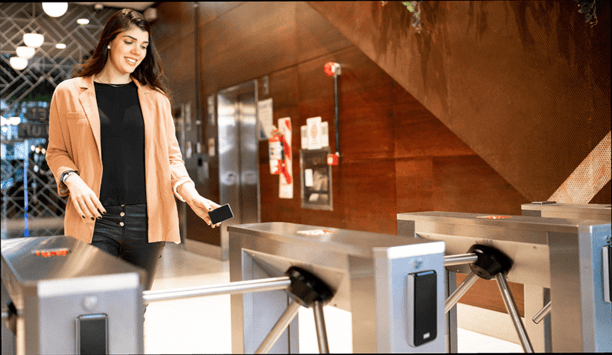
The truth behind 9 mobile access myths
Download
Access control system planning phase 2
Download

